|
|
Post by bixaorellana on Nov 7, 2015 5:02:31 GMT
|
|
|
|
Post by bixaorellana on Nov 7, 2015 5:15:08 GMT
continuing in Mehmet III's tomb ~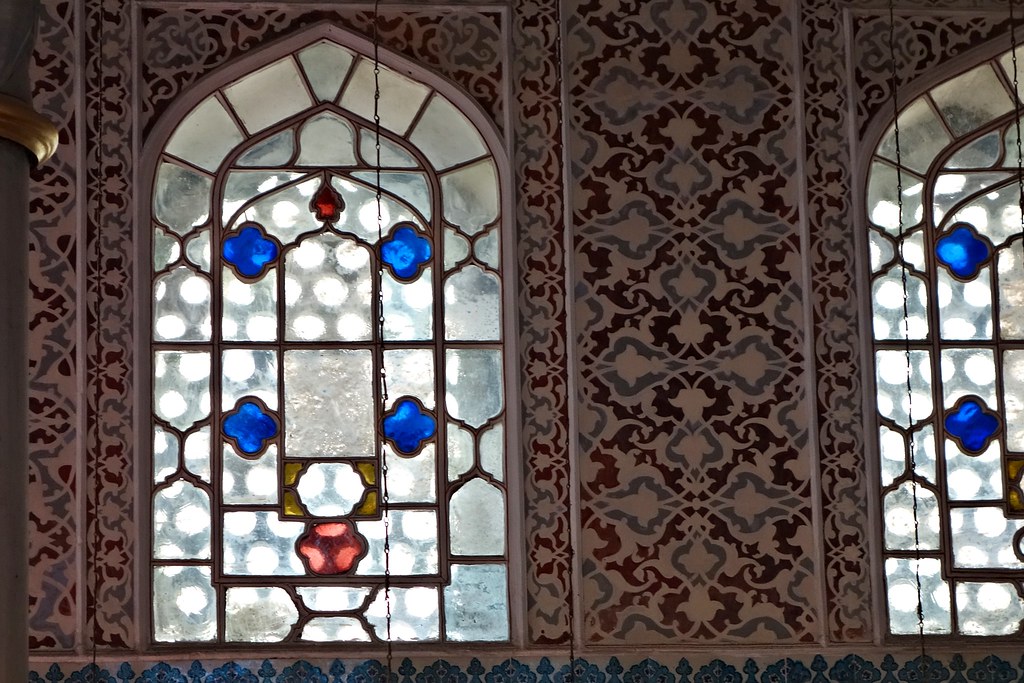 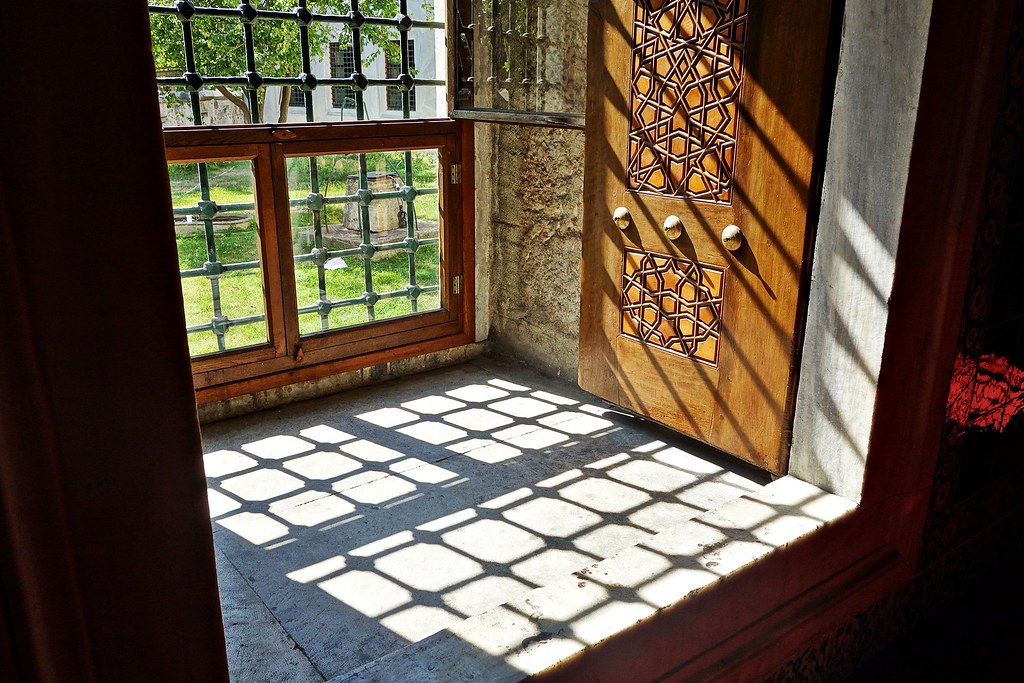 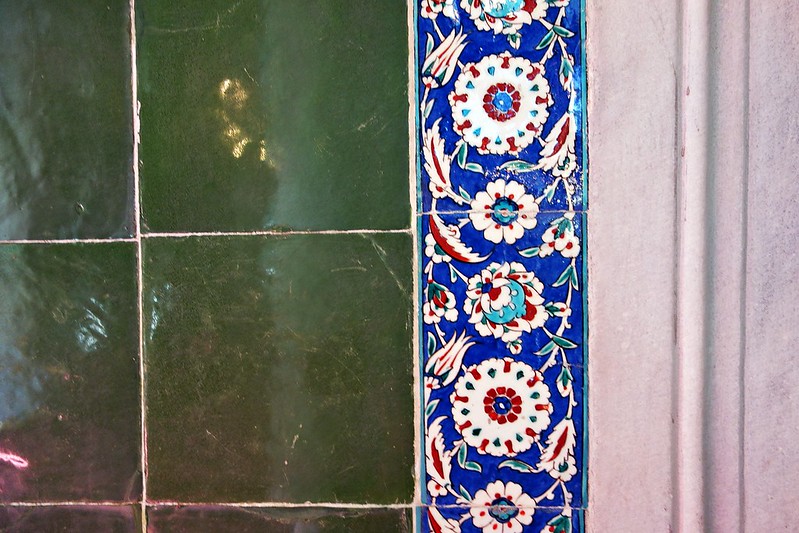 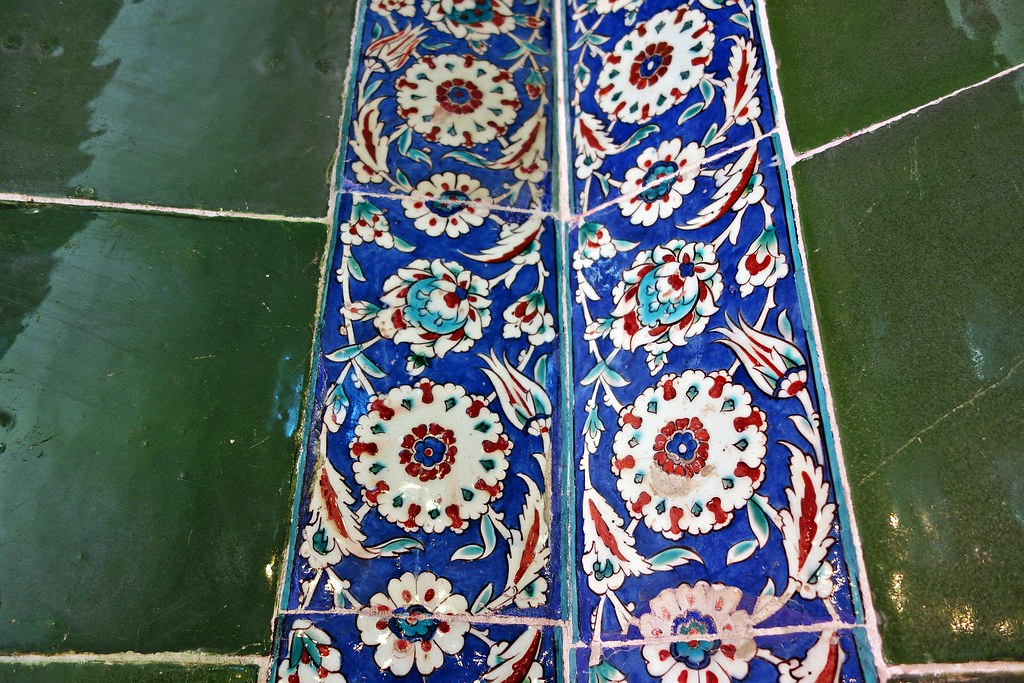 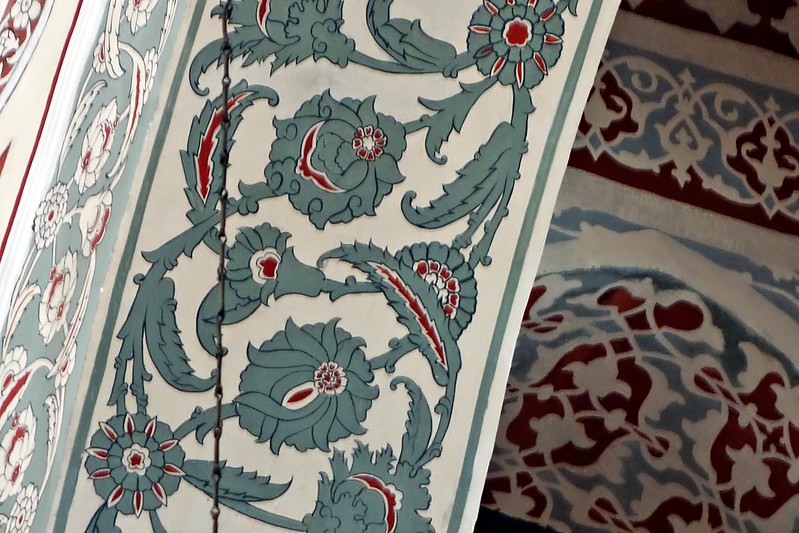 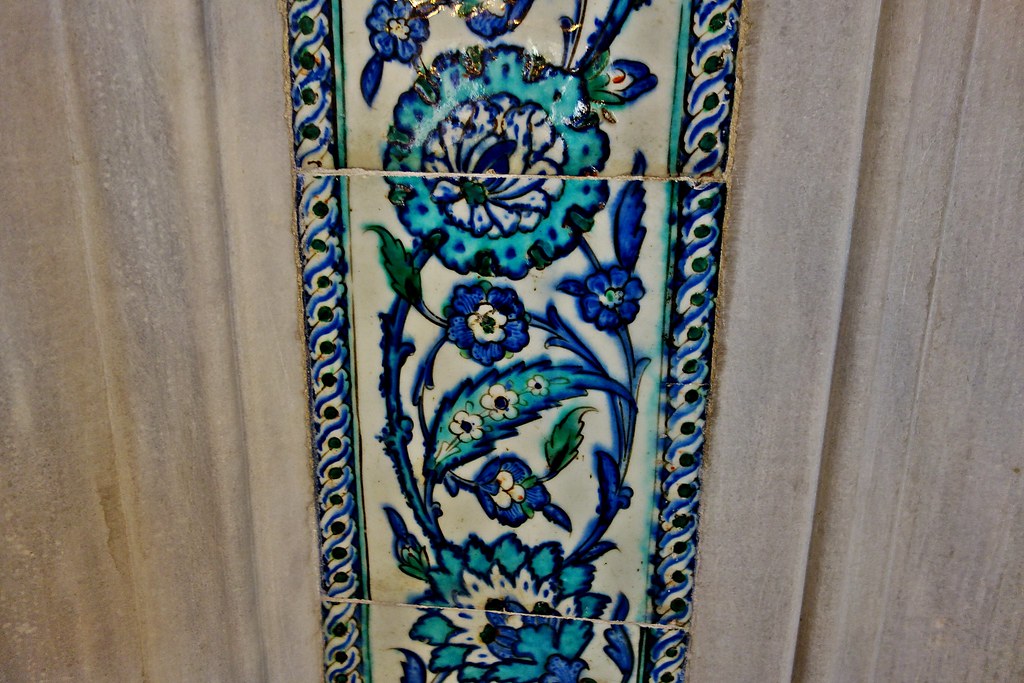 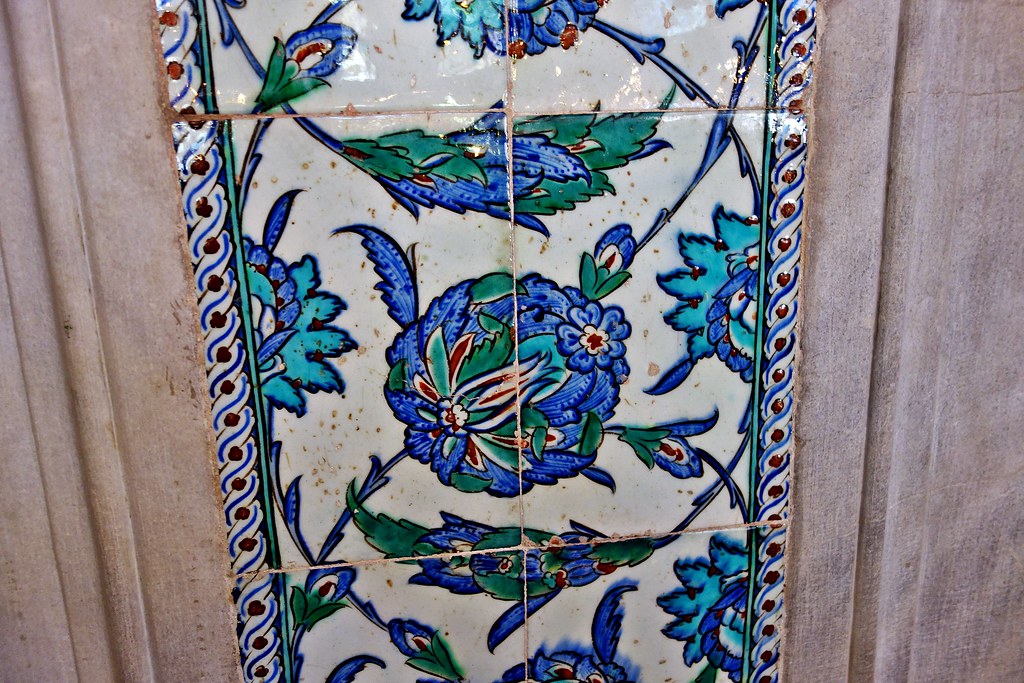 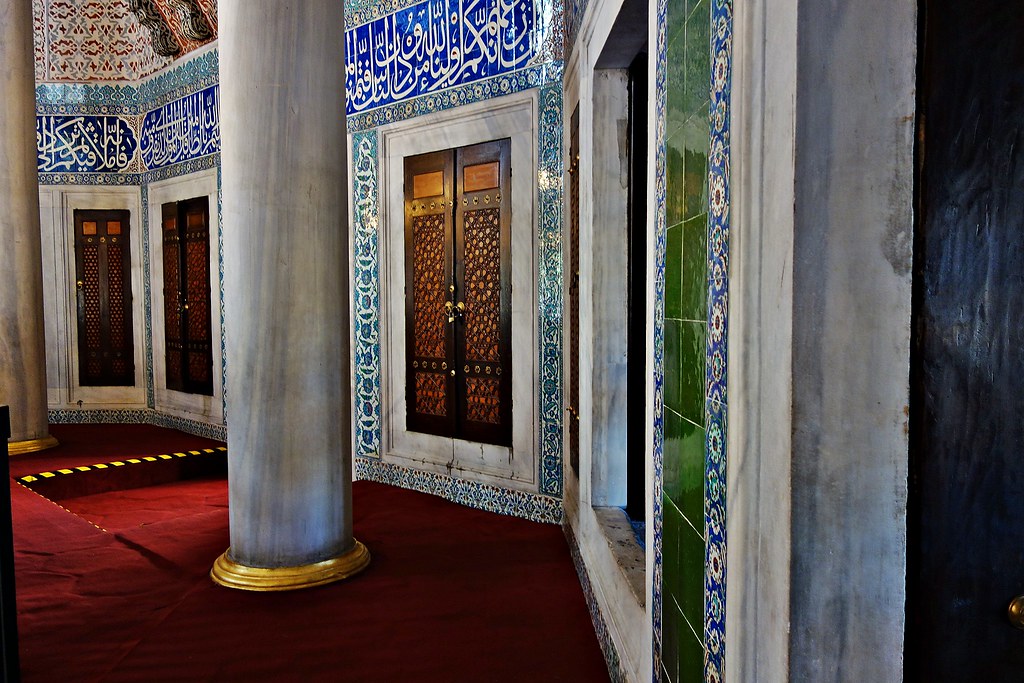 Outside again and walking toward the tomb of Sultan Selim II ~ Outside again and walking toward the tomb of Sultan Selim II ~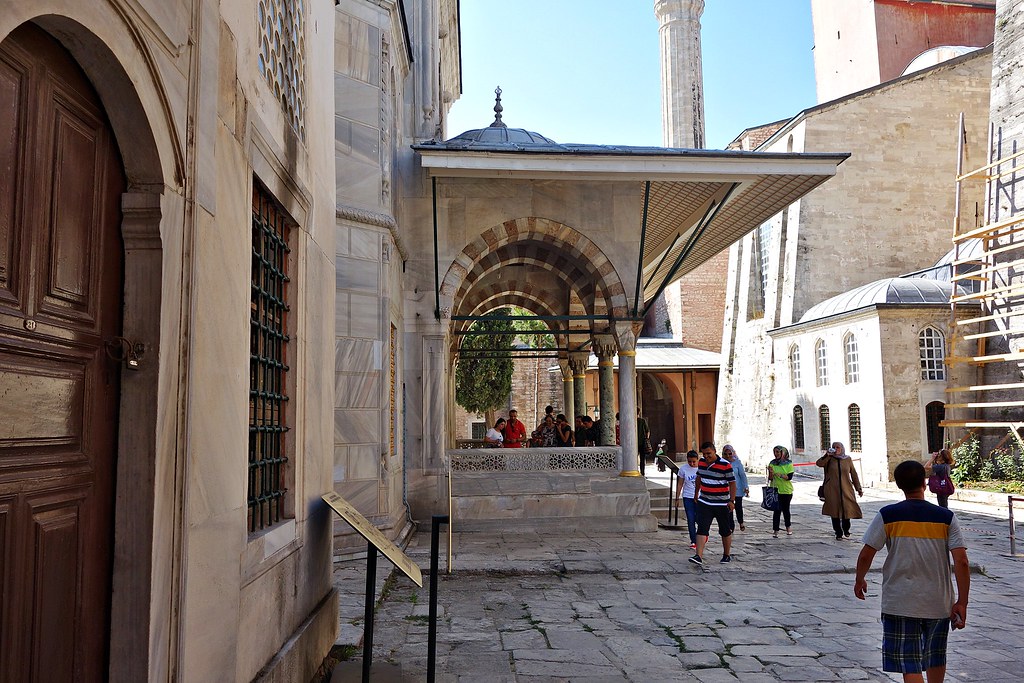
|
|
|
|
Post by bixaorellana on Nov 7, 2015 5:42:32 GMT
The tomb of Sultan Selim II ~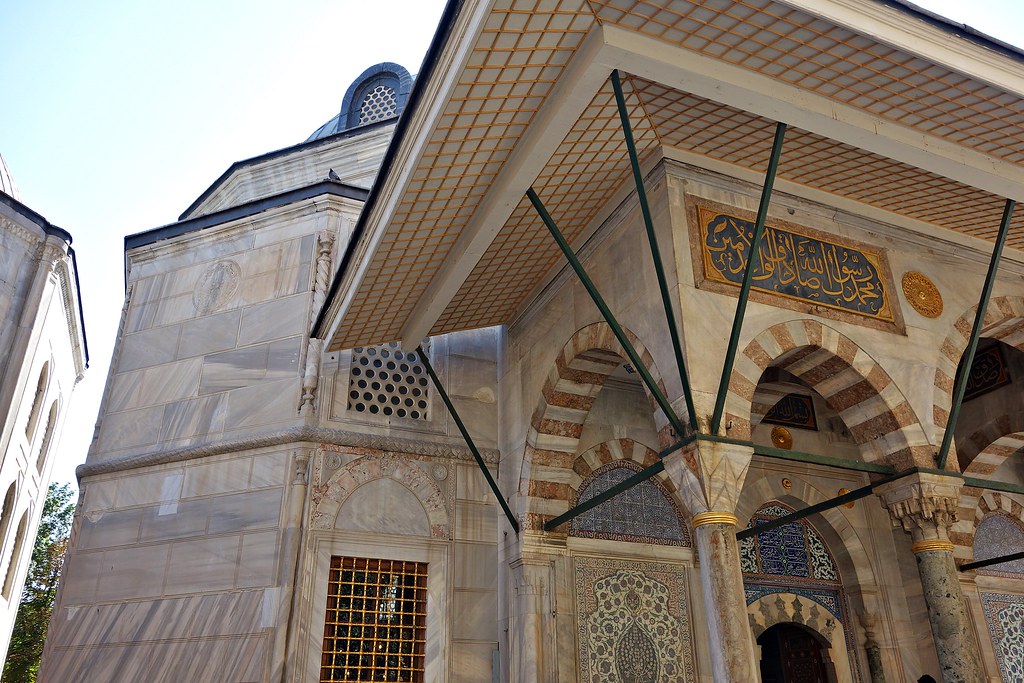 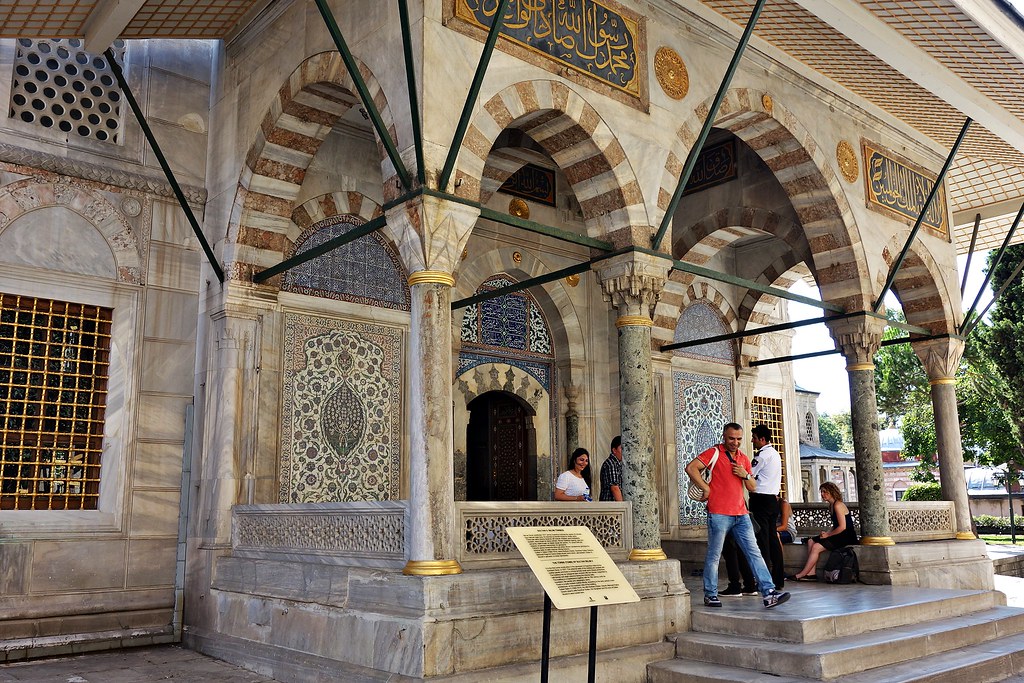 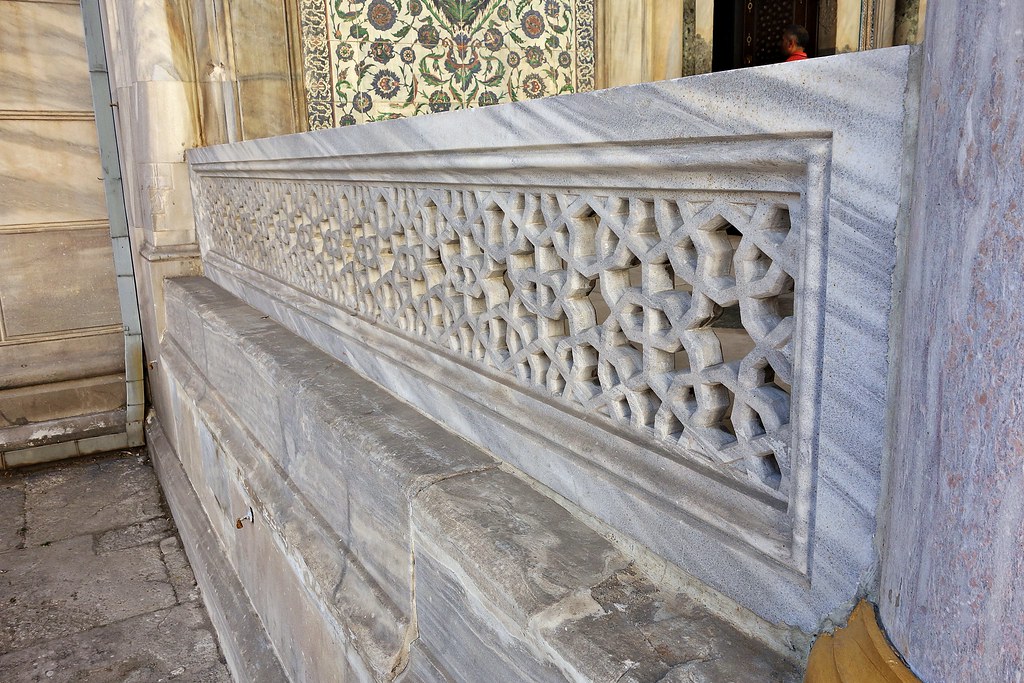 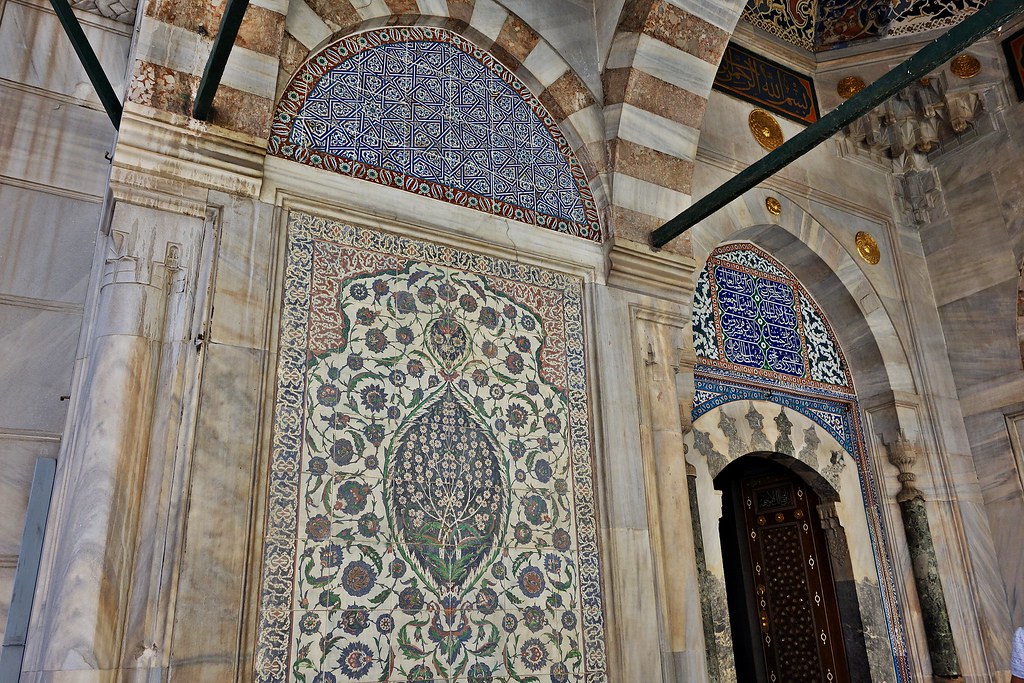 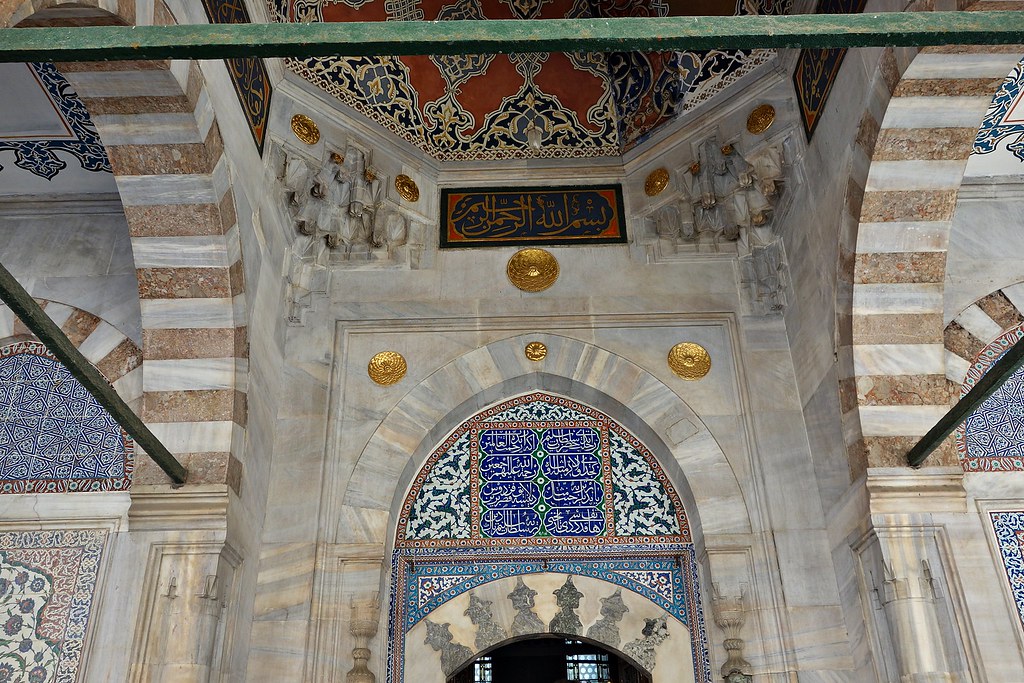 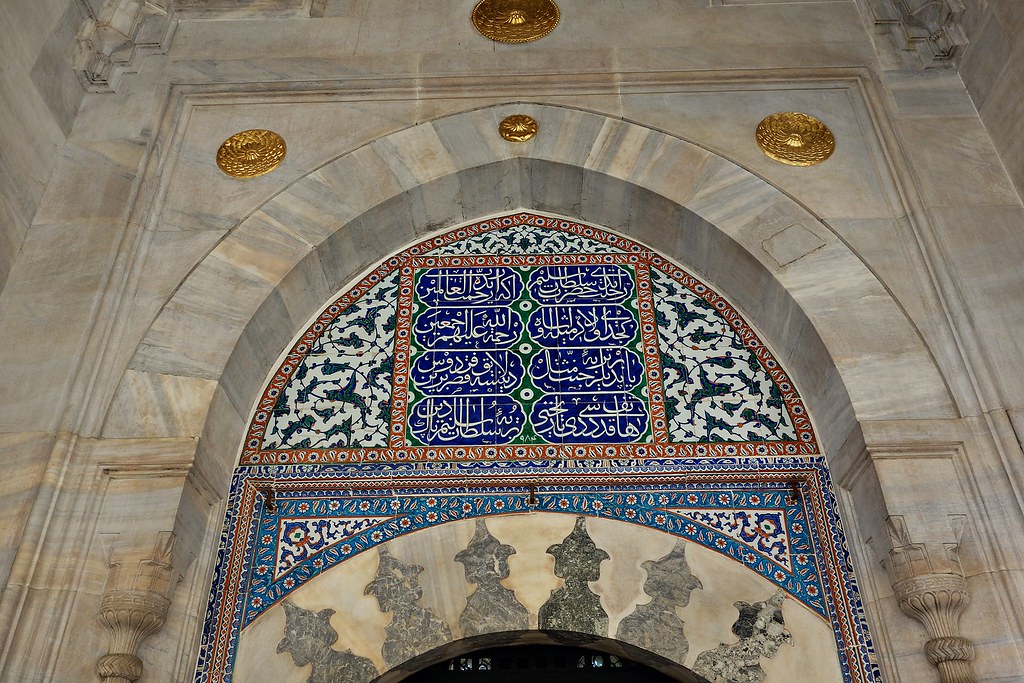 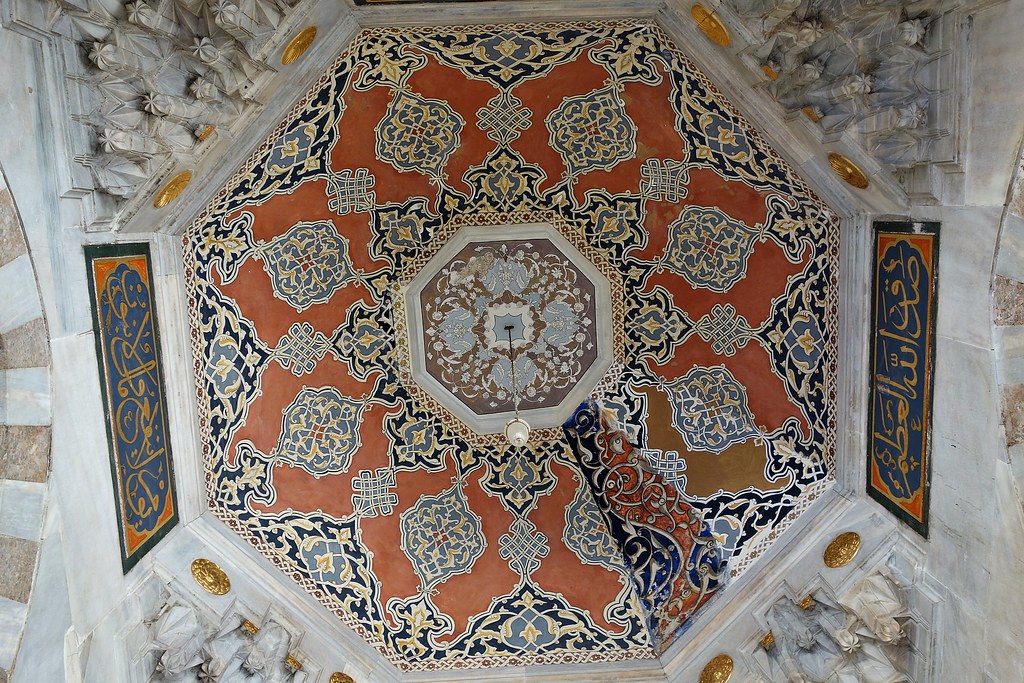 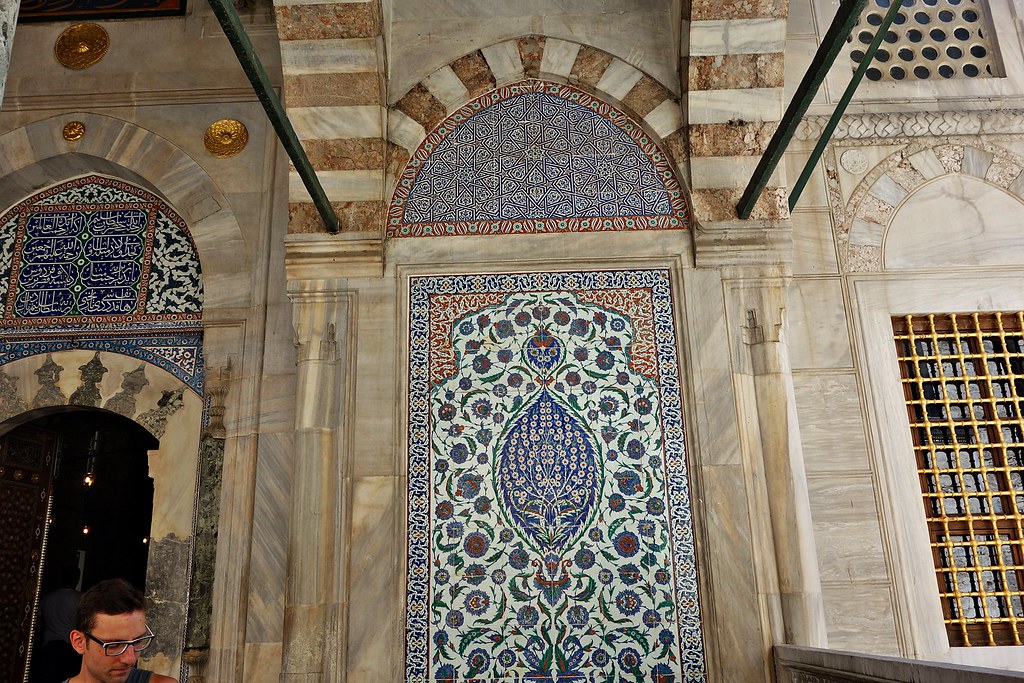 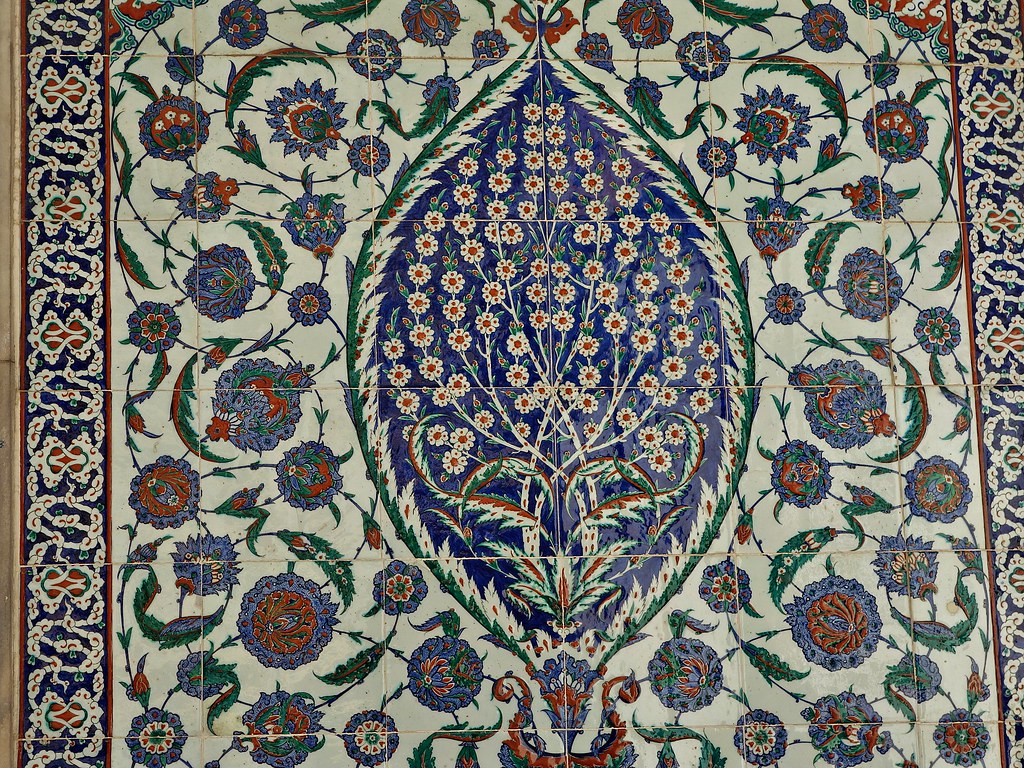 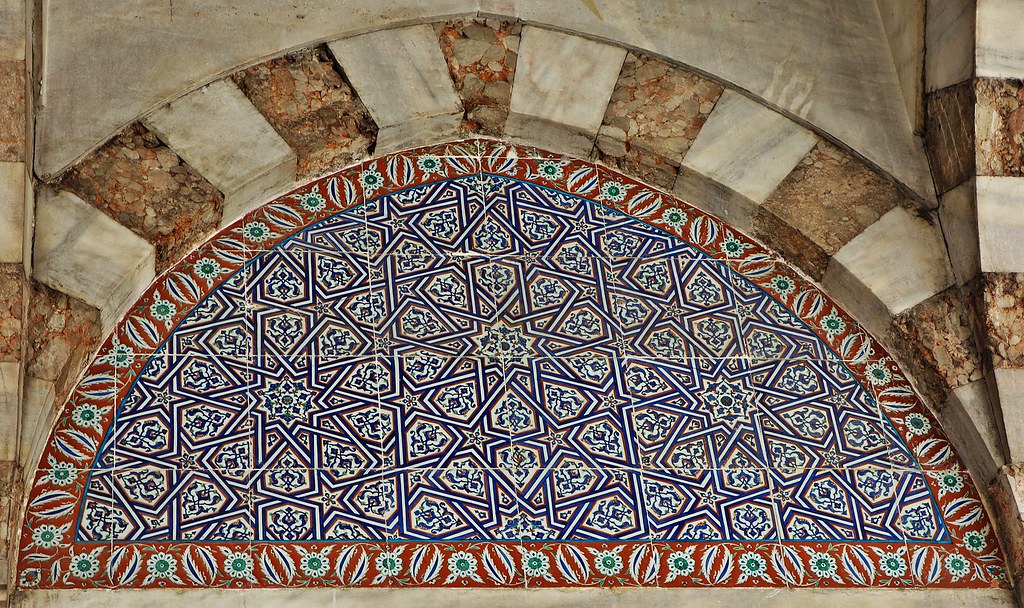 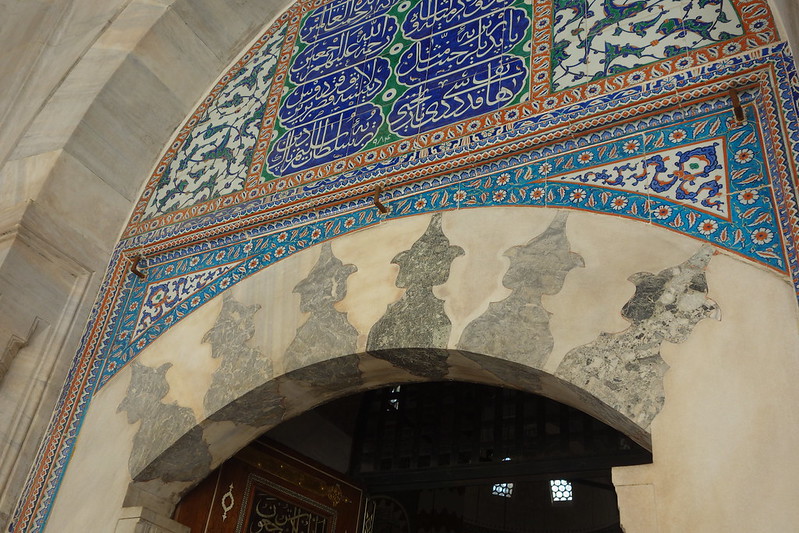 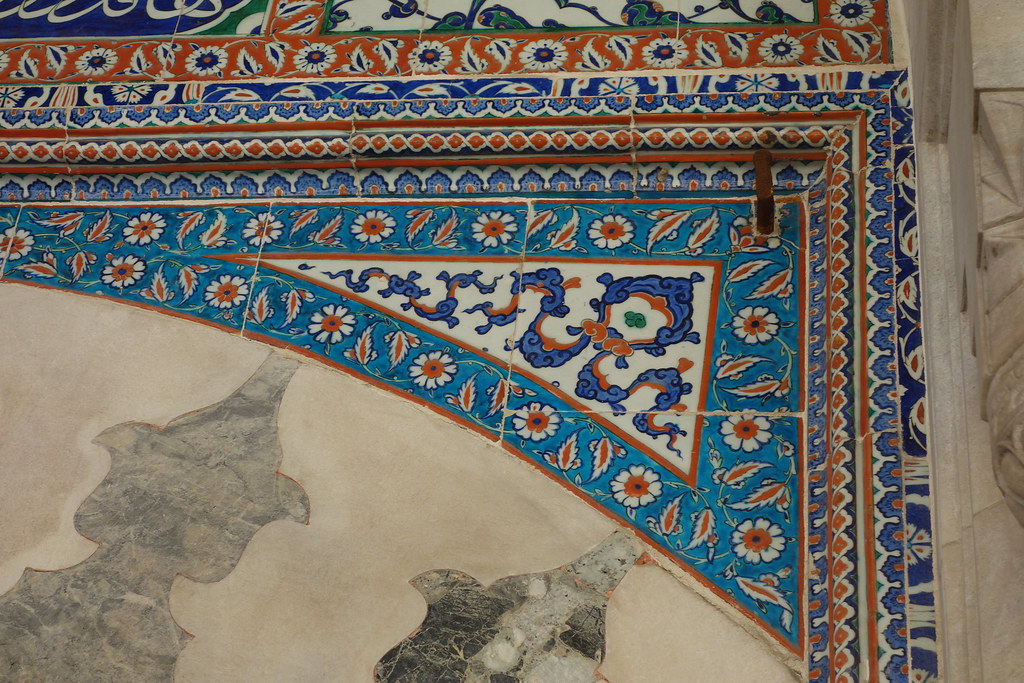 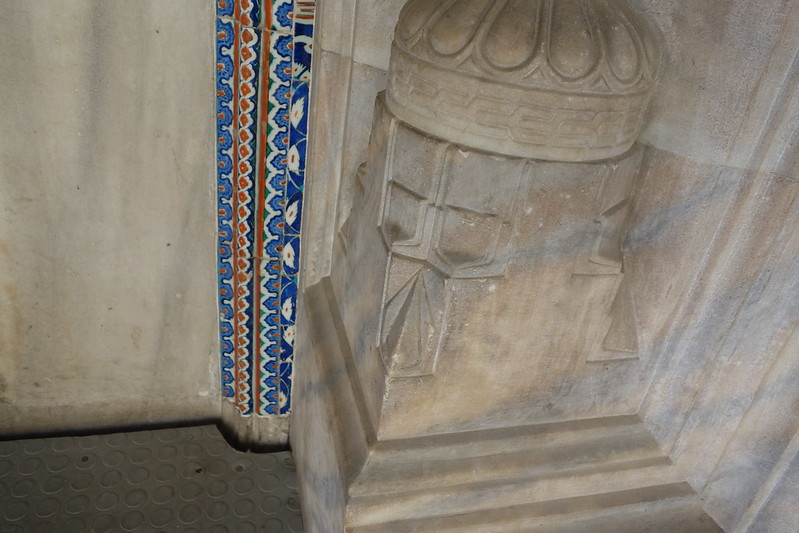 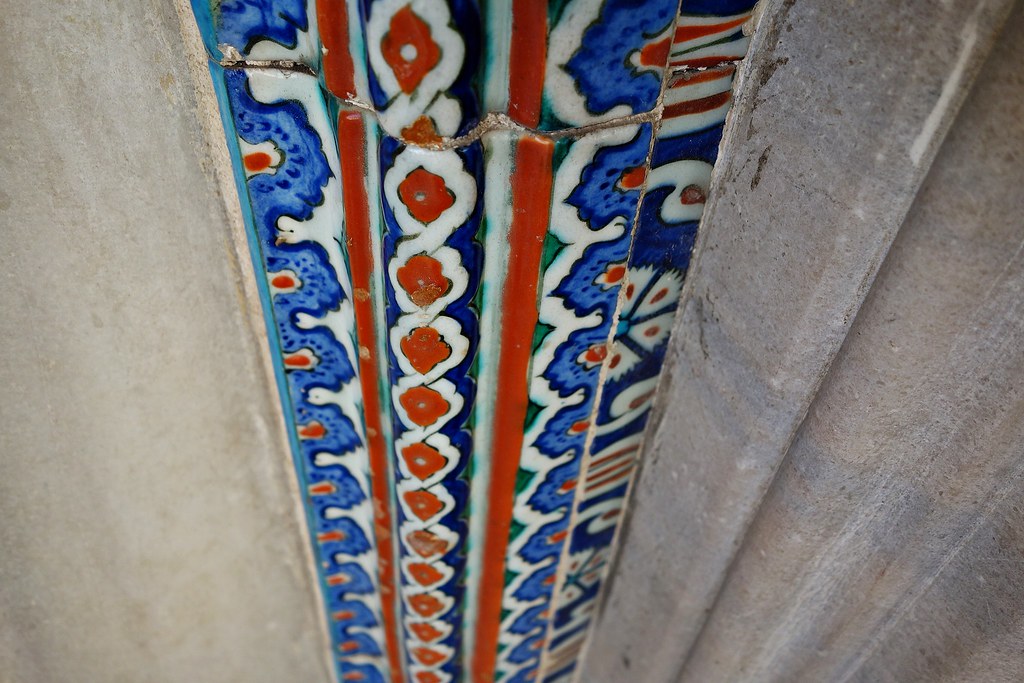 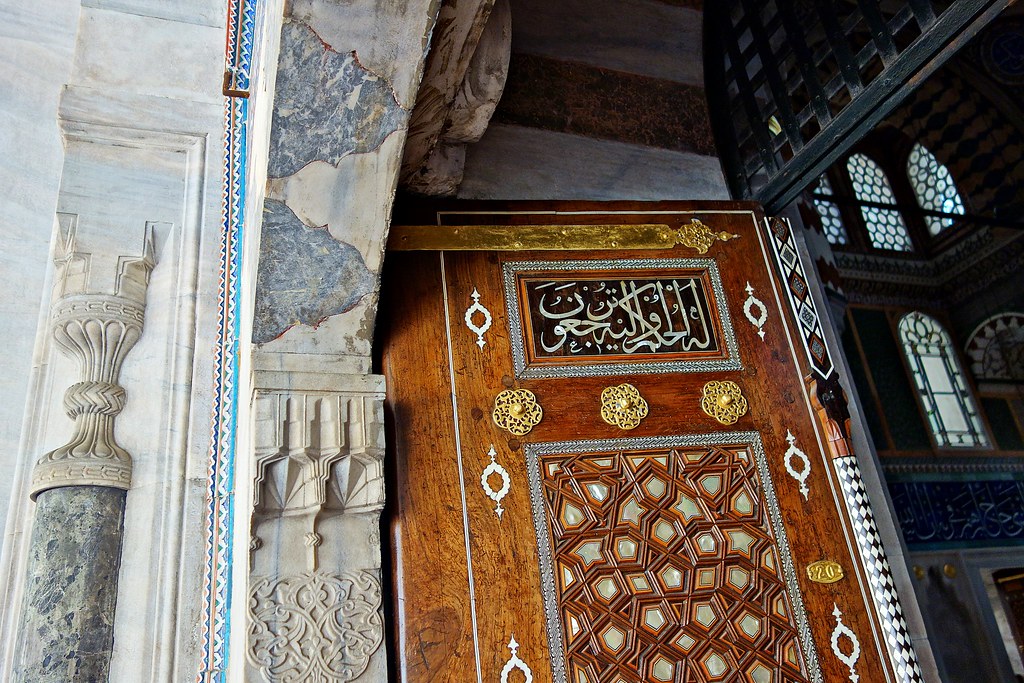 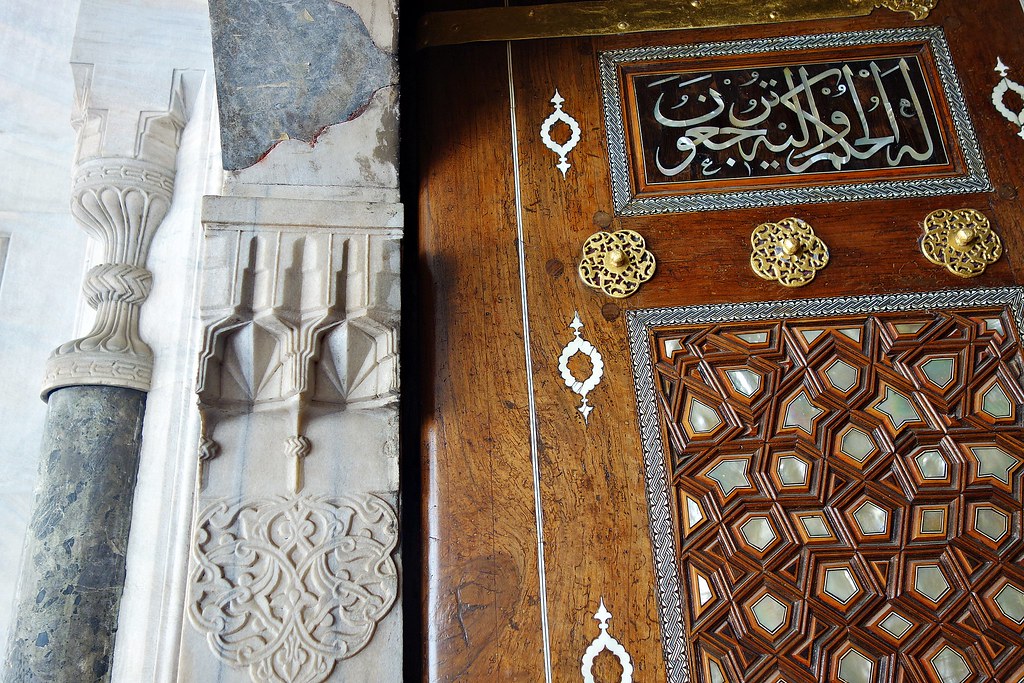 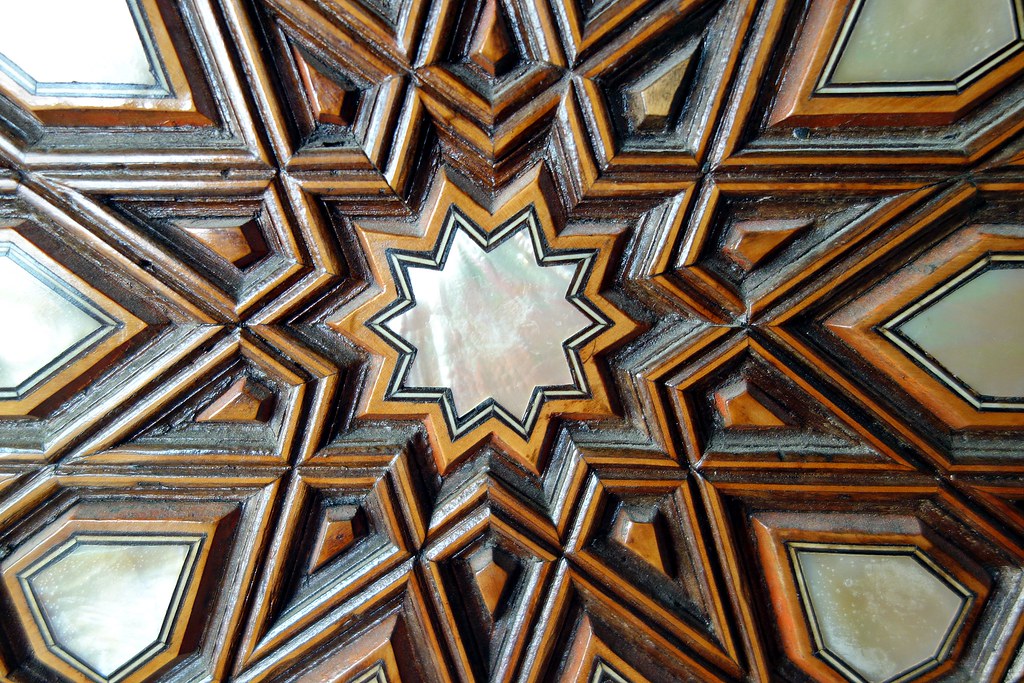 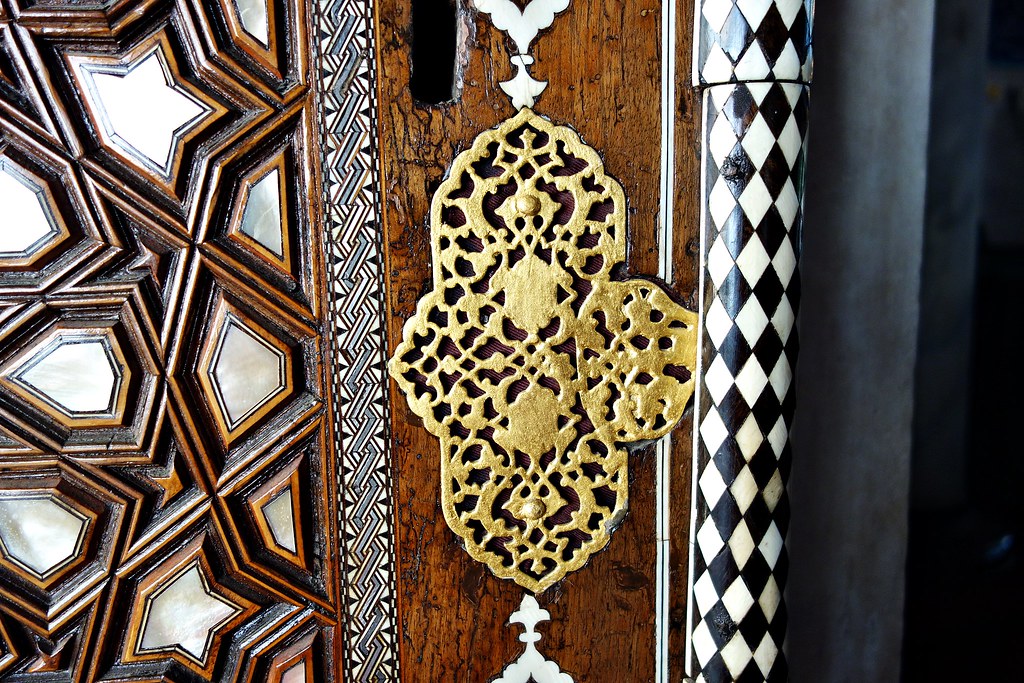
|
|
|
|
Post by bixaorellana on Nov 7, 2015 6:12:18 GMT
and now entering the tomb of Selim II ~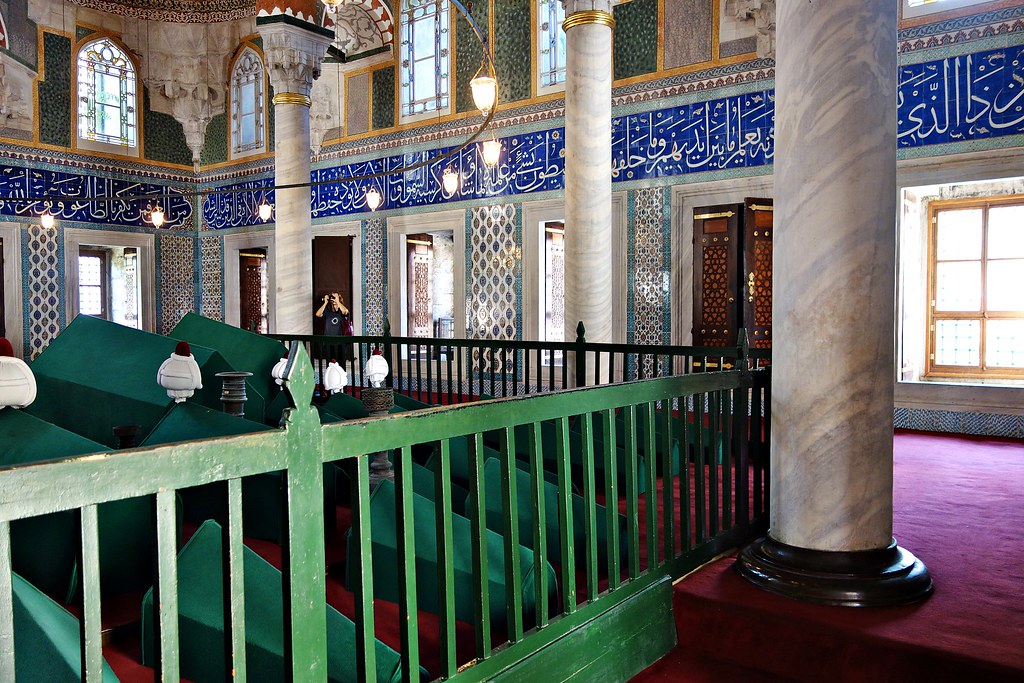 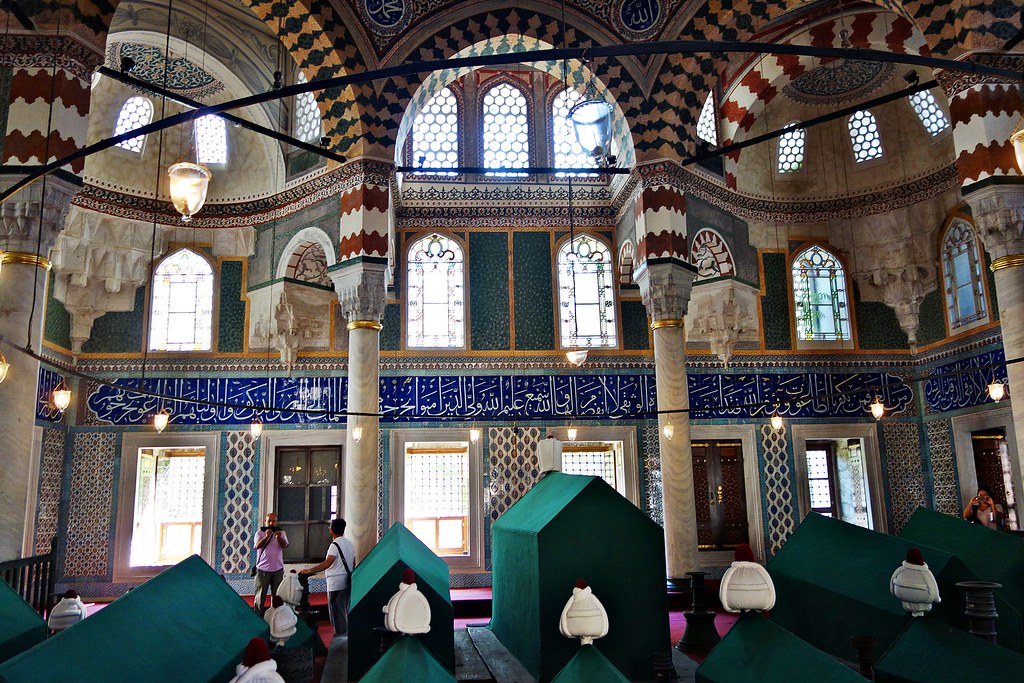 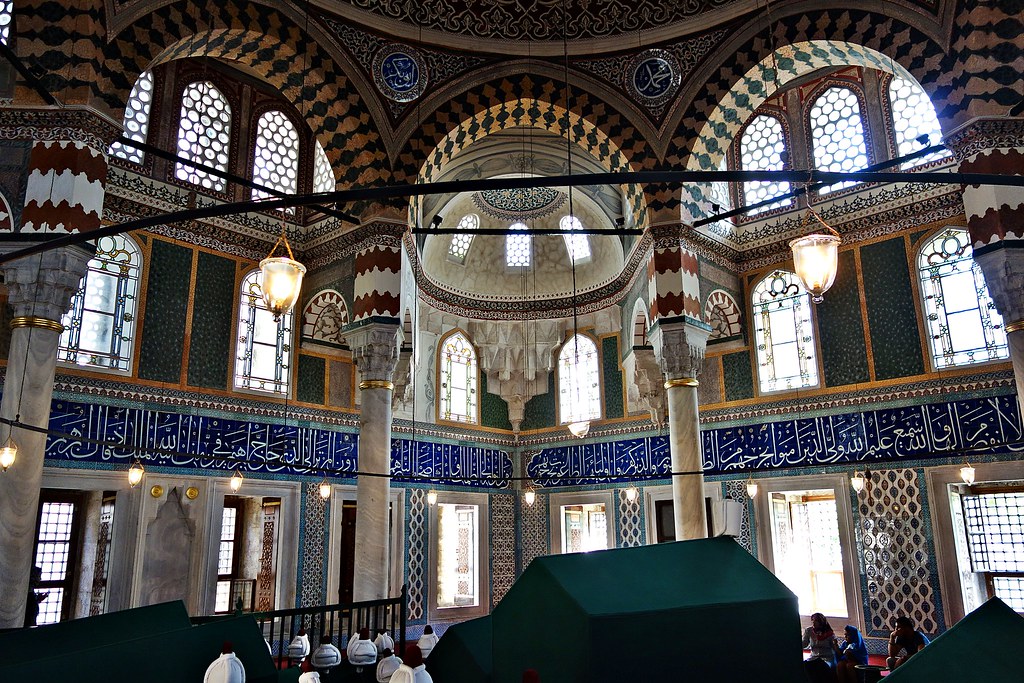  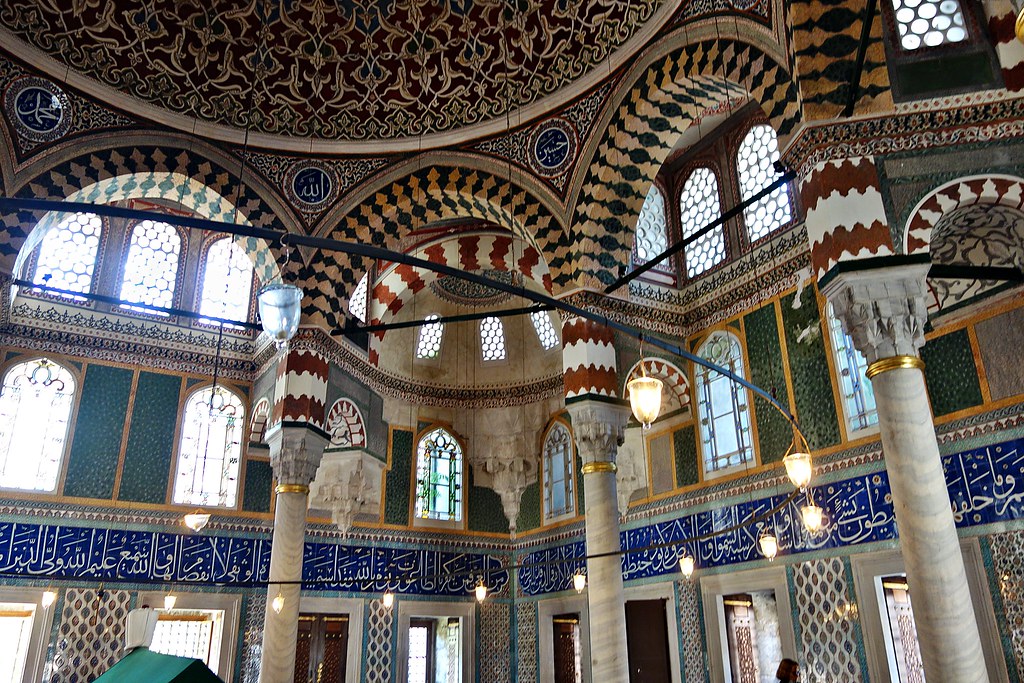 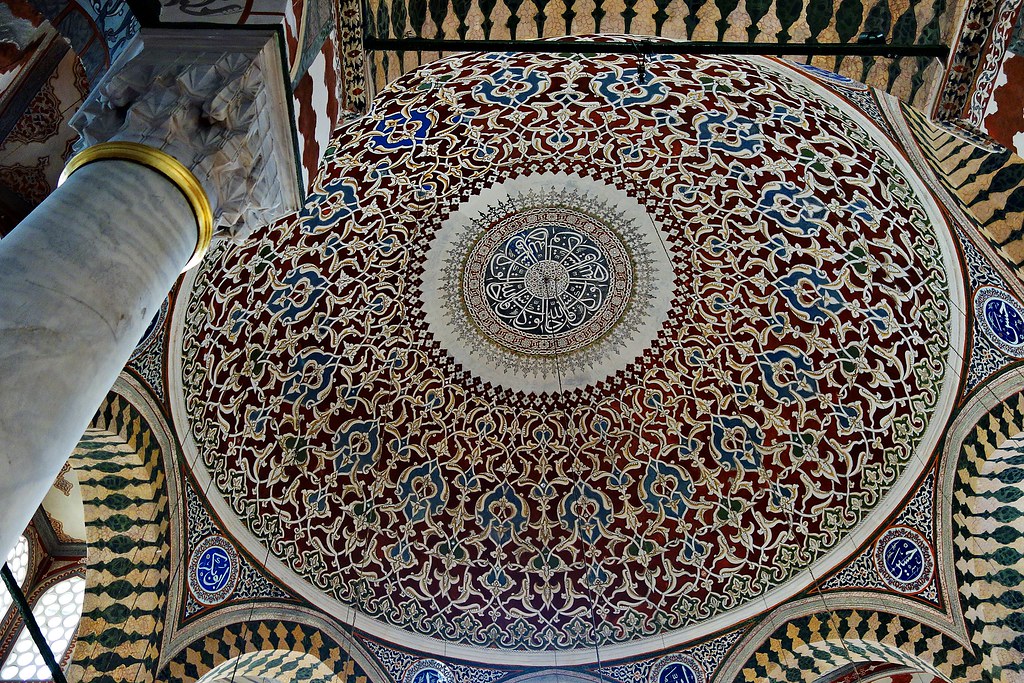 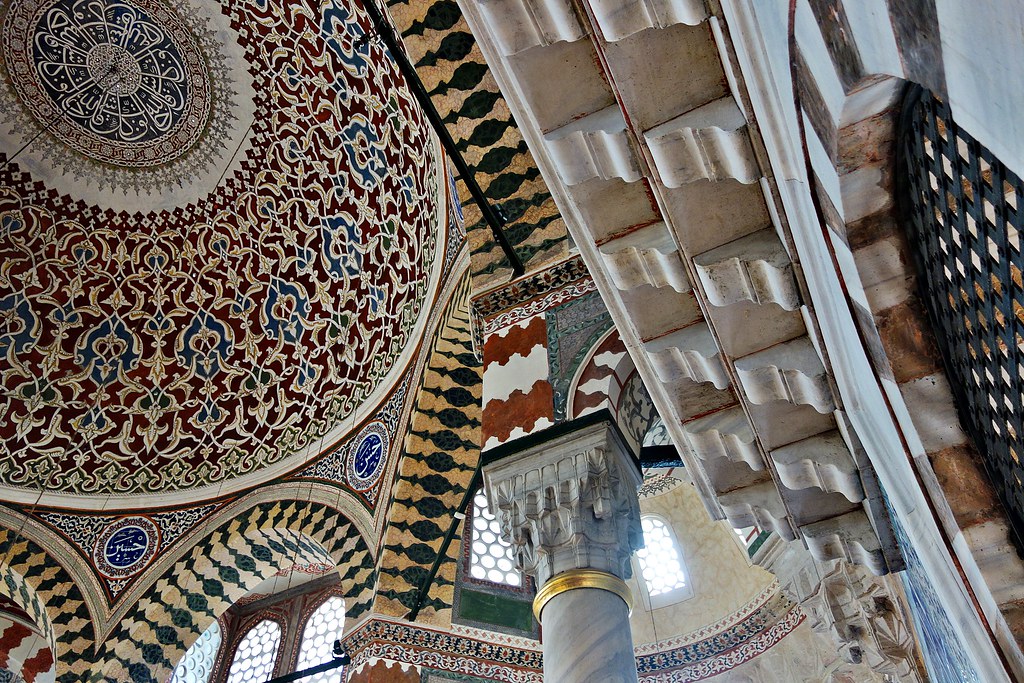 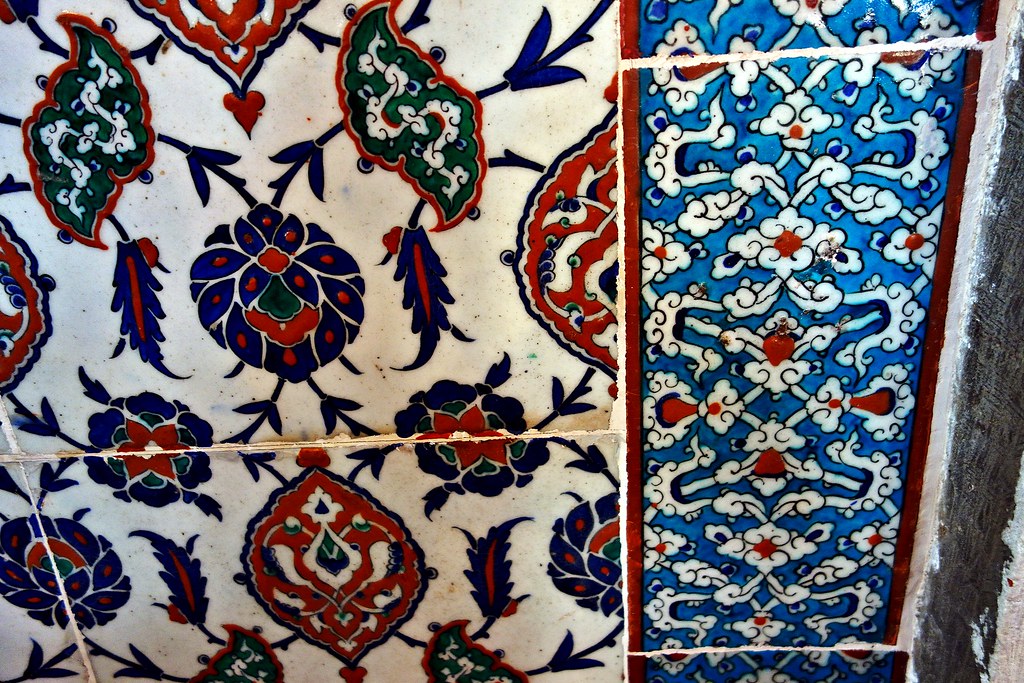 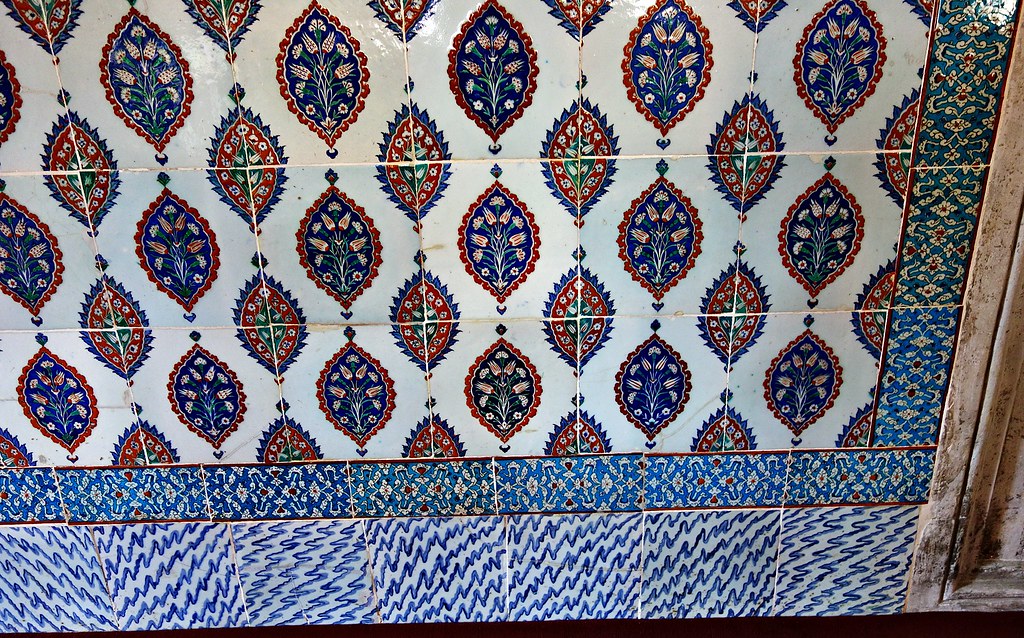 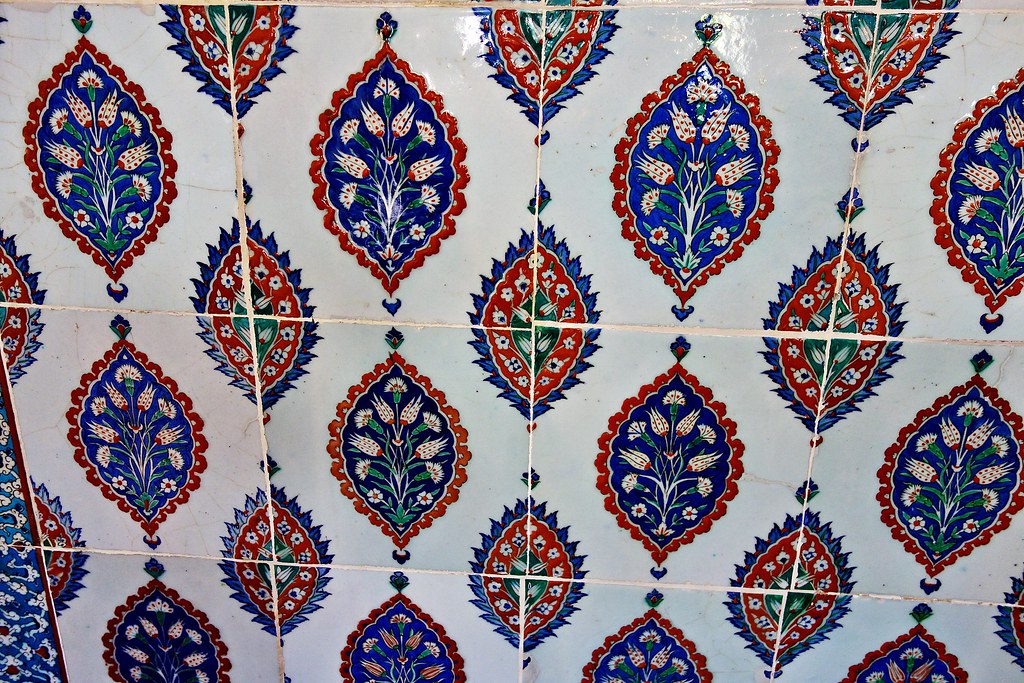 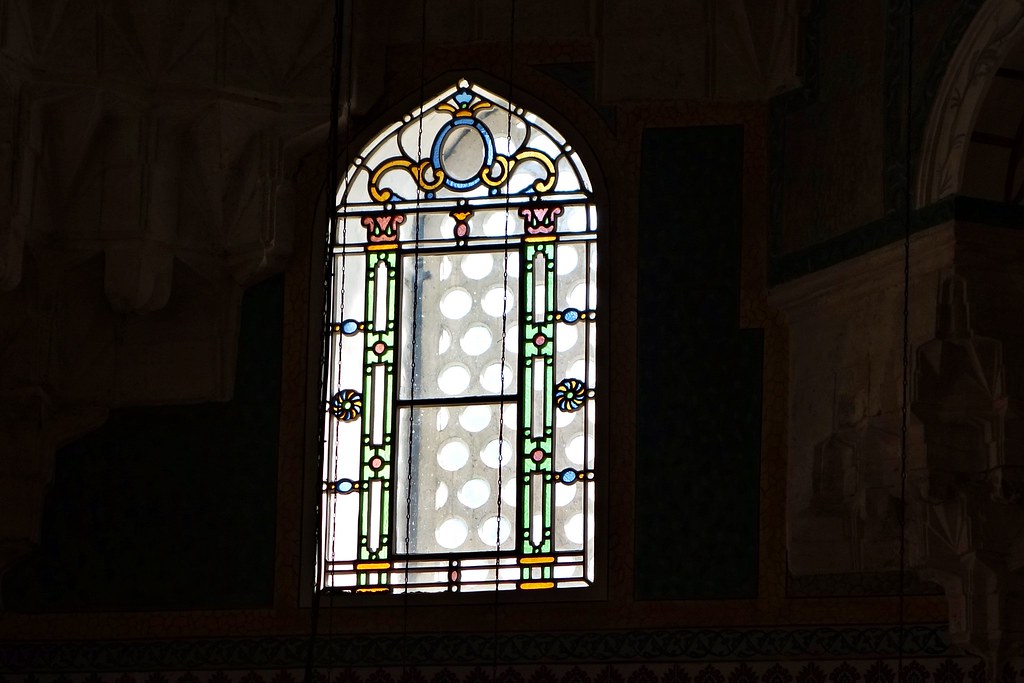 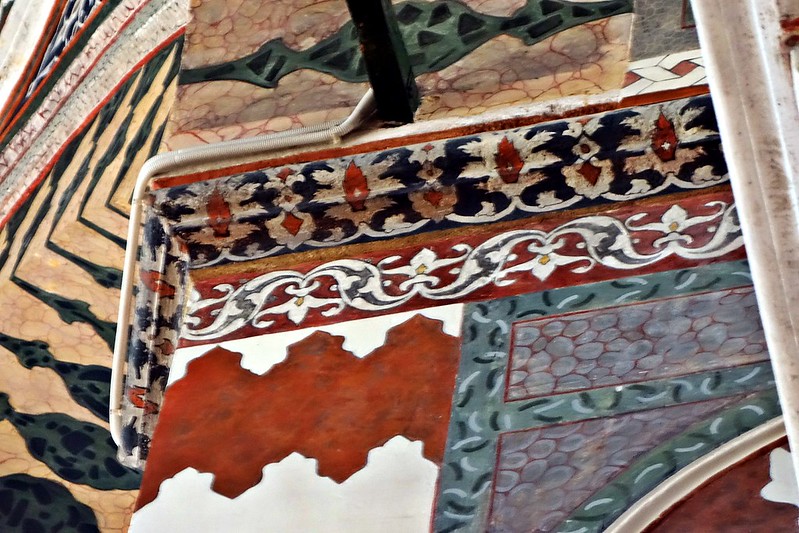 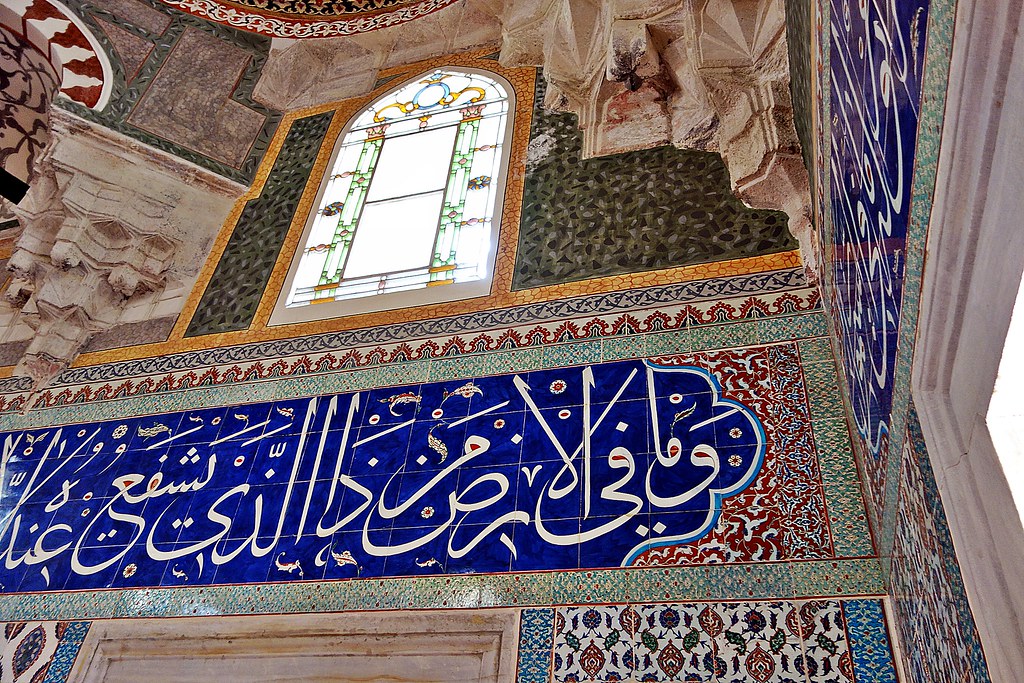 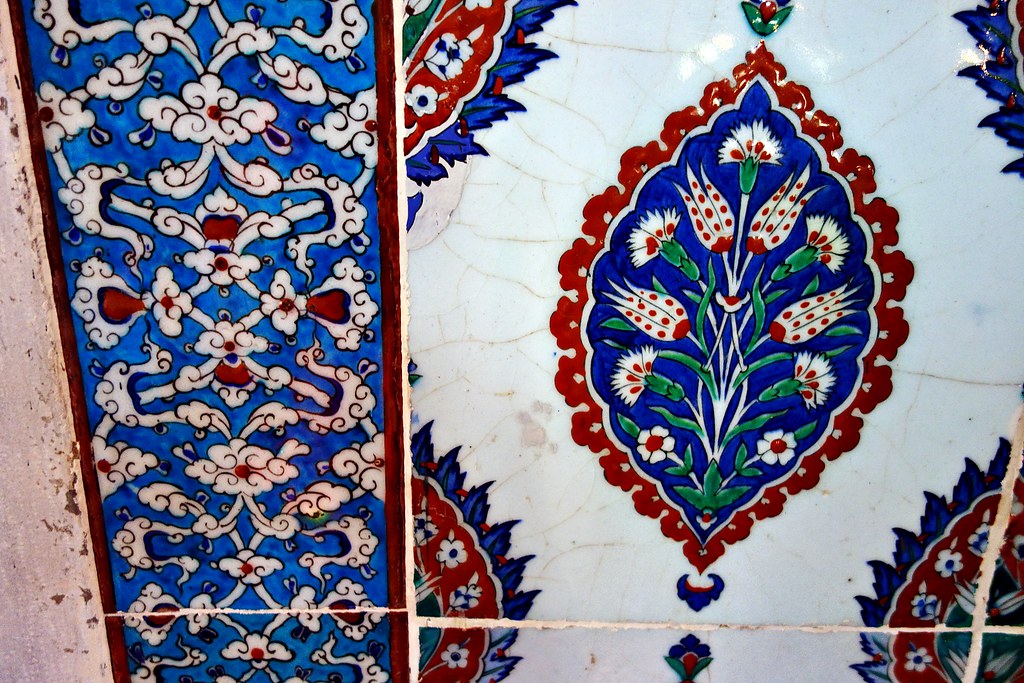 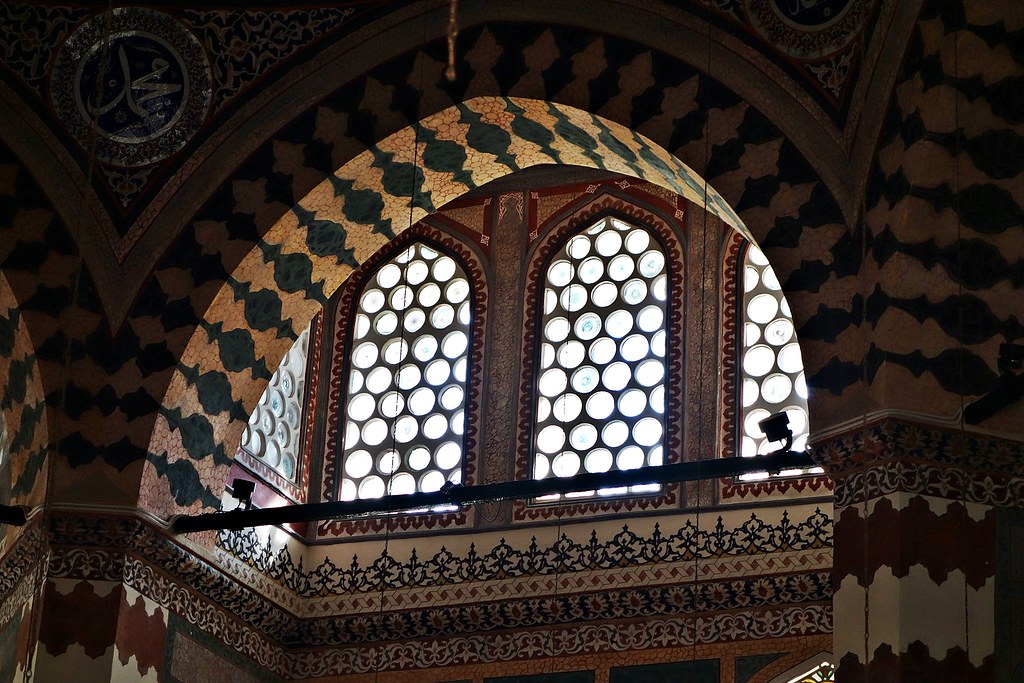 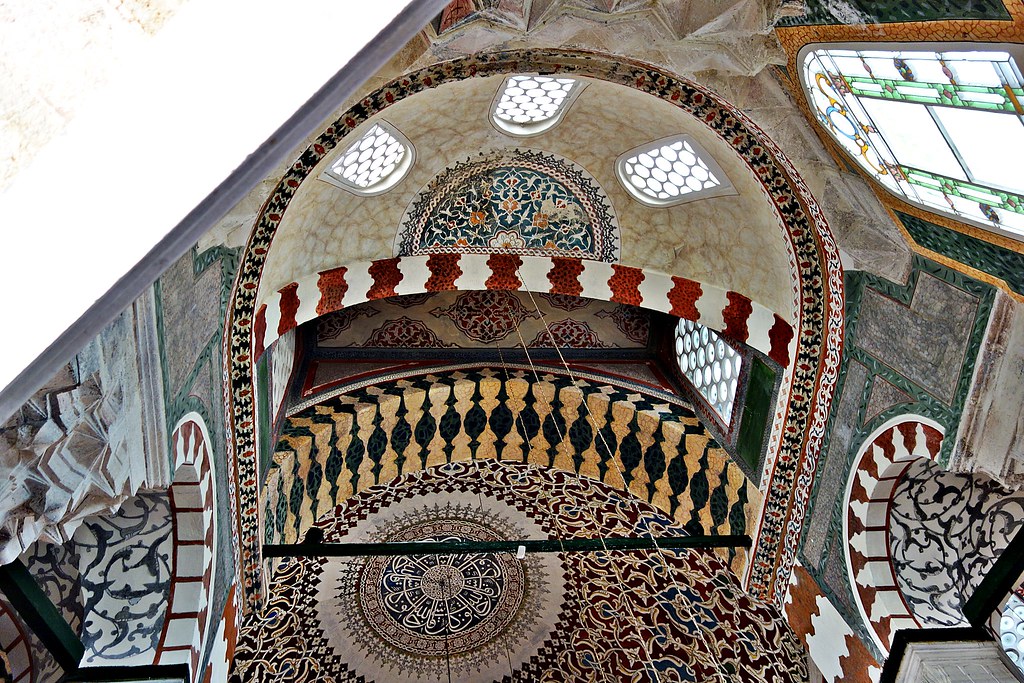 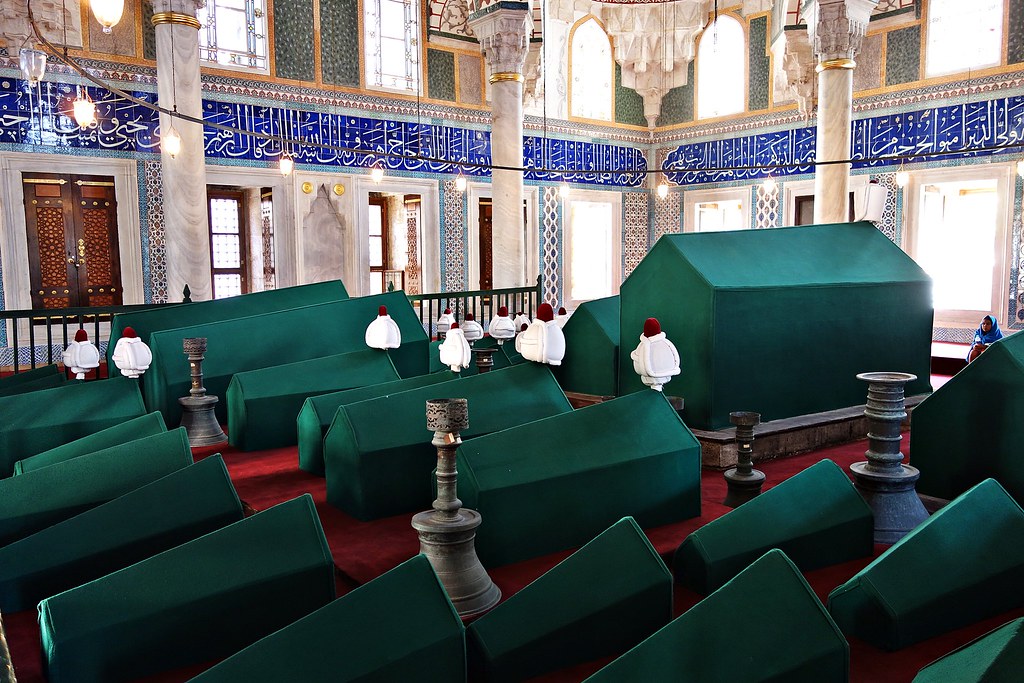 There is one more tomb to show after this one, with possibly the most dazzling tiles yet, but that will have to wait until tomorrow. There is one more tomb to show after this one, with possibly the most dazzling tiles yet, but that will have to wait until tomorrow.
|
|
|
|
Post by Deleted on Nov 7, 2015 6:57:29 GMT
More and more amazing, but it is also amazing that the tombs themselves look so "ordinary." I suppose that there is some religious rule in play here.
In spite of all of this splendour, I found myself wondering about how ceramic tiles found their way from the Islamic world to our bathrooms. So I looked it up, and the reply is the same one as usual -- through Spain when it was an Islamic country. I also saw that the first items were glazed bricks and they date back to Mesopotamia around 575 BC. So by the time these tiles were installed, it was already a thousand year tradition. There people are certainly not amateurs!
|
|
|
|
Post by bjd on Nov 7, 2015 7:06:19 GMT
I can't understand how I missed the beginning of this thread. Anyway, I just went through all the Hagia Sophia photos. The place is magnificent, despite the scaffolding. I prefer the Byzantine mosaics to the tilework, but perhaps that's just a question of looking at it all at once -- too much of a good thing.
I keep thinking I have to go to Istanbul, but the current political situation is putting me off.
|
|
|
|
Post by questa on Nov 7, 2015 8:06:00 GMT
Looking at all these I feel like I am spinning around inside a kaleidoscope. It certainly has mind altering qualities. Such brilliant decorations and so brilliantly captured, Bixa
bjd...I have found that countries that are having internal troubles tend to ignore tourists, specially those travelling in a small group. They have no fight with us.
It is the places where the people are angry at external events...usually USA or UK, Europe in general. Then they are more likely to show anger at us and threaten us. We are seen as representing their foes.
This current scene in Istanbul should not cause you any probs. Use common sense 1)stay away from demos and gatherings 2) keep a low profile, don't go around giving your opinions loudly. 3) keep up to date with information from hotel desks about where is safe or not. 4) Don't go to very touristy restaurants, pubs etc . 5) take extra care on Fridays after the prayers and sermon at the mosques. I have noticed that many riots start post sermon.
The payoff is that with fewer tourists you see more, food and accommodation are cheaper, your haggling position in the markets is better and you can understand the dynamics of the situation of change.
|
|
|
|
Post by bjd on Nov 7, 2015 9:01:47 GMT
Questa, thanks for that but in fact I'm not worried about being caught up in demonstrations or anything. I just don't approve of what Erdogan is doing re freedom of the press, bombing the Kurds who are fighting the Islamic State, etc. Since I don't need to go on vacation, I would rather choose where to spend my tourist euros.
Of course, it can be argued that many of the more interesting countries to visit have unpleasant/corrupt/undemocratic regimes but at the moment it's Turkey that's getting the headlines.
I agree that political problems make travelling more pleasant. We went to Morocco in 2002 and talked to guides to complained about a lack of tourists. The same when I went to Kenya in 2004 -- the Masai Mara was pretty empty of vans, whereas a few years before there were 6 around each lion.
|
|
|
|
Post by bixaorellana on Nov 8, 2015 2:25:28 GMT
More and more amazing, but it is also amazing that the tombs themselves look so "ordinary." I suppose that there is some religious rule in play here. Ummm ~ by "ordinary" I'm assuming you mean the very plain, green cloth covered sarcophagi and not the fancy-by-any-criteria building itself, correct? It's an interesting observation, particularly because we saw some similar cloth-covered biers in a tomb room on the grounds of the Sufi museum. The cloth on those was much richer and more elaborate.In spite of all of this splendour, I found myself wondering about how ceramic tiles found their way from the Islamic world to our bathrooms. So I looked it up, and the reply is the same one as usual -- through Spain when it was an Islamic country. I also saw that the first items were glazed bricks and they date back to Mesopotamia around 575 BC. So by the time these tiles were installed, it was already a thousand year tradition. There people are certainly not amateurs! I didn't know that! Actually, if you count from the era of the glazed bricks, it was more of a two thousand year tradition by the time these tombs were built in the 1500s and 1600s.I can't understand how I missed the beginning of this thread. Anyway, I just went through all the Hagia Sophia photos. The place is magnificent, despite the scaffolding. I prefer the Byzantine mosaics to the tilework, but perhaps that's just a question of looking at it all at once -- too much of a good thing. I find to my chagrin that I often miss stuff in the Europe category because it's so big, so I have to keep reminding myself to check "Recent Posts" to keep from being completely out of the loop.
To me, nothing can beat the Byzantine mosaics, which almost seem to have been created by a superior alien species. But the tiles, from an era at least 700 years later* and serving a different religious consciousness, are remarkable in their explosion of beauty on the eye. I use one of the tile pictures I'll show from the next tomb as my lock screen image, just because it gives me so much pleasure every time I open the laptop.
*The madonna in Hagia Sophia's apse is from the 800s, but some of the original gold background is from the 600s. Here is more than you'll ever want to know about that image, but fascinating info in how the colors and sizes of tesserae were chosen.I keep thinking I have to go to Istanbul, but the current political situation is putting me off. Bjd, you of all people do have to go to Istanbul! I say that because of your background in travel & knowledge of eastern Europe. In fact, when you go I am going to be envious of the eyes through which you'll see the place. There is so much of the culture, the feel, and even the look of many of the people which announces that you are in the continuation of eastern Europe, where Europe segues into Asia. It's one of the most fascinating aspects of a fascinating modern country.Looking at all these I feel like I am spinning around inside a kaleidoscope. It certainly has mind altering qualities. Such brilliant decorations and so brilliantly captured, Bixa Oh, thank you, Questa! When I was there I stopped worrying about covering ground already tread by you & Ansh and just greedily wanted to capture all I could with the camera. I really appreciate your looking at "what I bagged" and your kind comments.... The payoff [in countries with internal troubles] is that with fewer tourists you see more, ... and you can understand the dynamics of the situation of change. Interesting point, especially since those troubles were certainly going on before we became aware of them through reading the news.Questa, thanks for that but in fact I'm not worried about being caught up in demonstrations or anything. I just don't approve of what Erdogan is doing re freedom of the press, bombing the Kurds who are fighting the Islamic State, etc. Since I don't need to go on vacation, I would rather choose where to spend my tourist euros. There is no denying that the political situation there is depressing. But in terms of history happening right now, Turkey is a place to experience it. Even with my limited means of communication, I managed to find out that many of the people with whom I came in contact were in fact Syrians or Kurds. One of the hotel staff who was unfailingly kind to me was a Russian. The Turkish manager of the hotel pointed out to me that they all spoke each others languages to at least some degree: "After all, we've been living together for 450 years."
My point being, those are the people who benefit from our tourist spending. |
|
|
|
Post by bixaorellana on Nov 8, 2015 2:55:39 GMT
The entry to the tomb of Murat III, left and right sides of the door.
I could not get over how closely placed these tombs were ~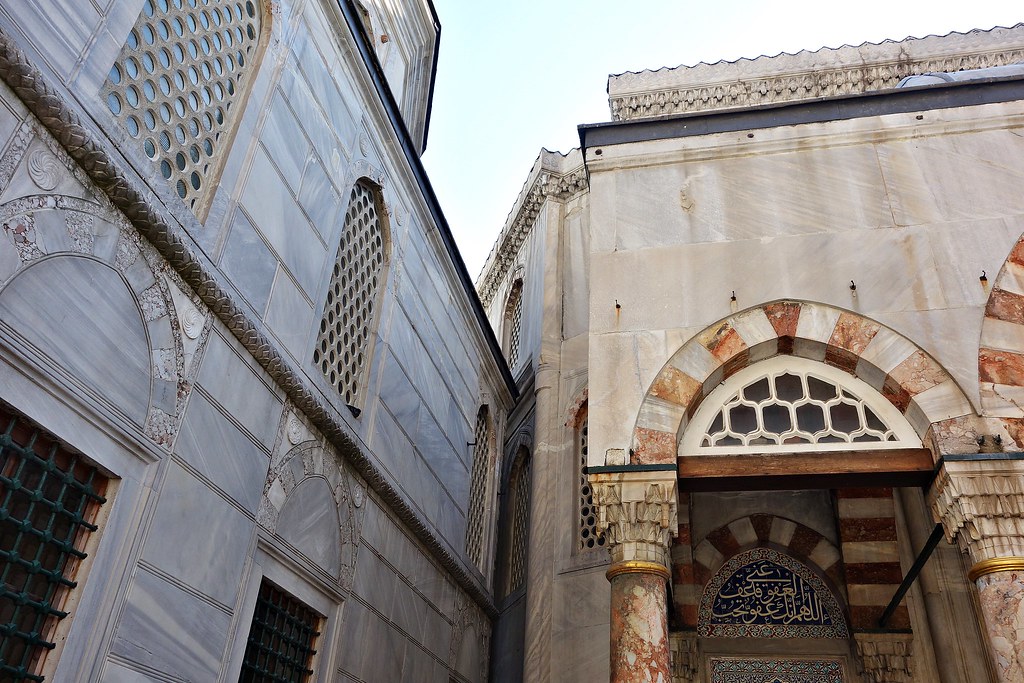 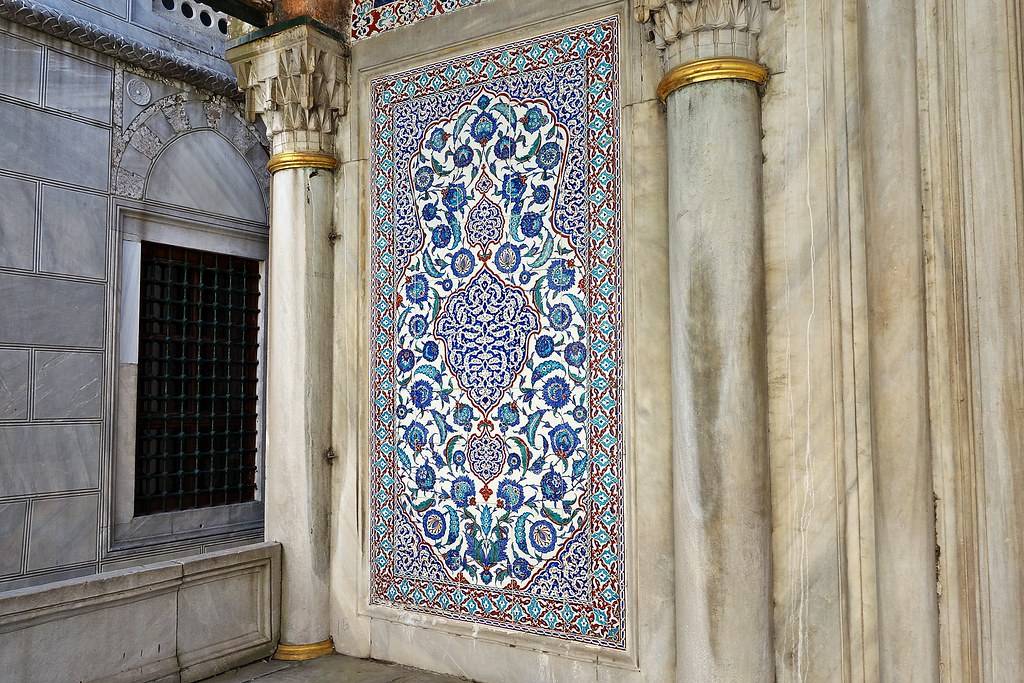 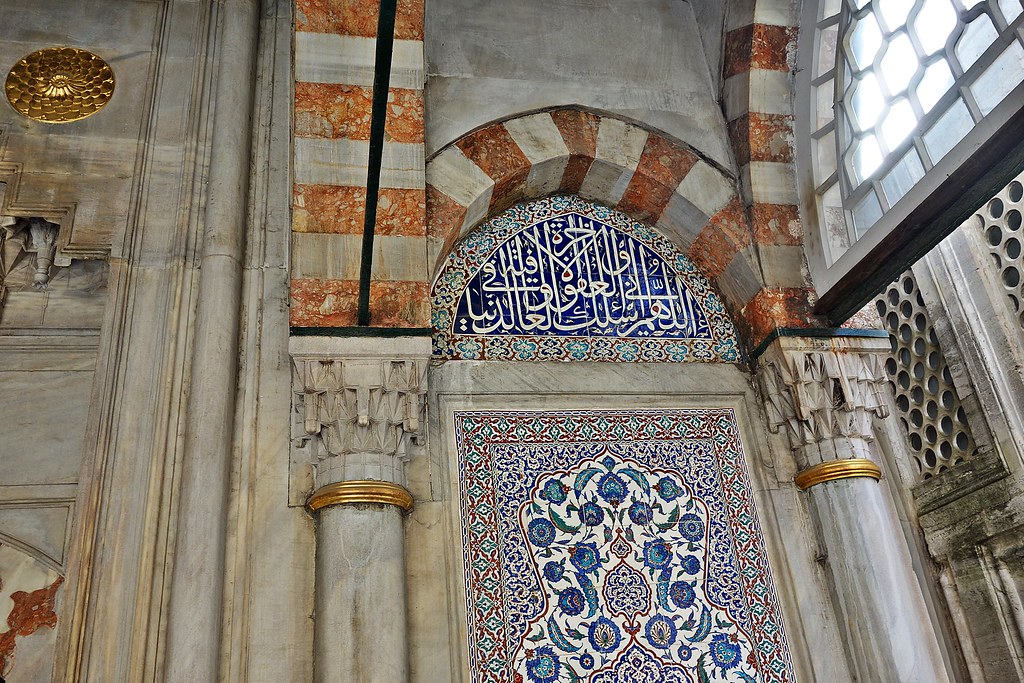 They pulled out all the stops tilewise for this tomb. Details of the entry panels ~ They pulled out all the stops tilewise for this tomb. Details of the entry panels ~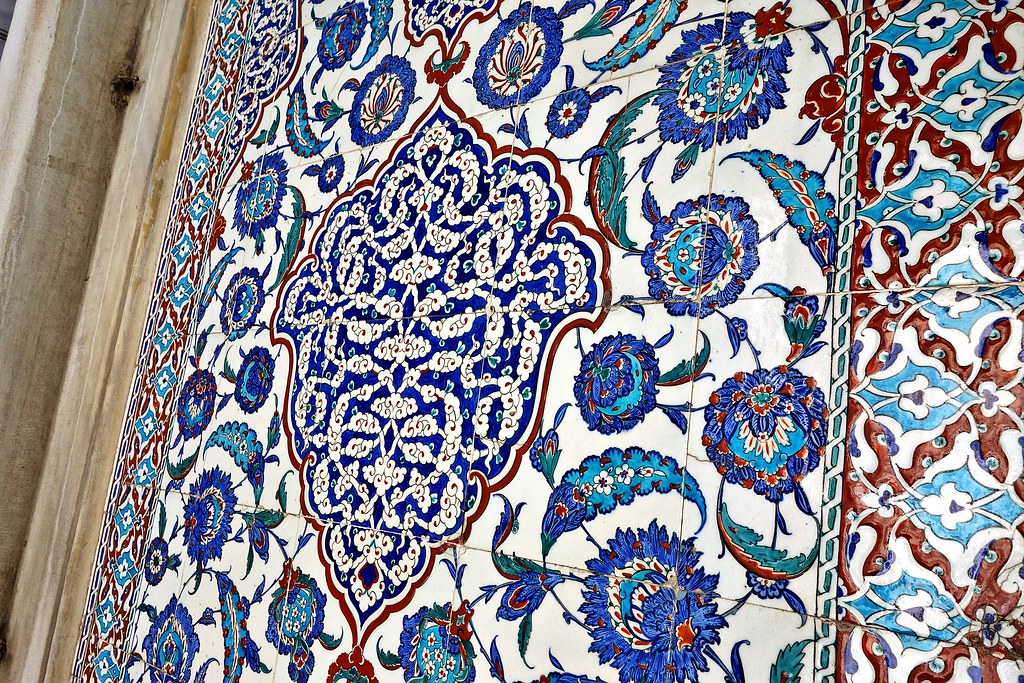 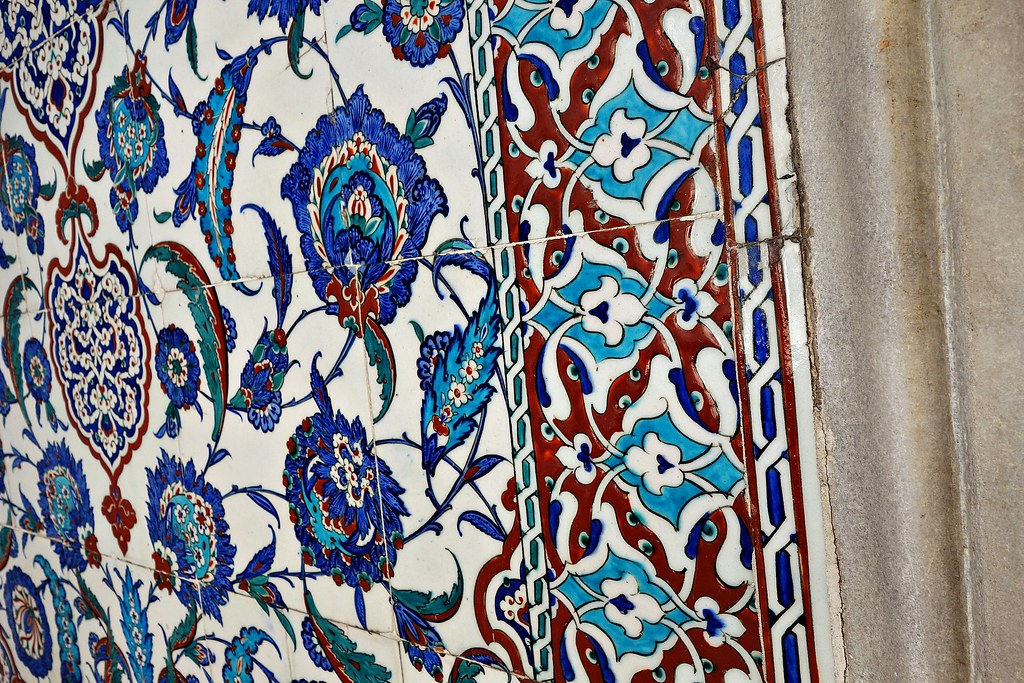 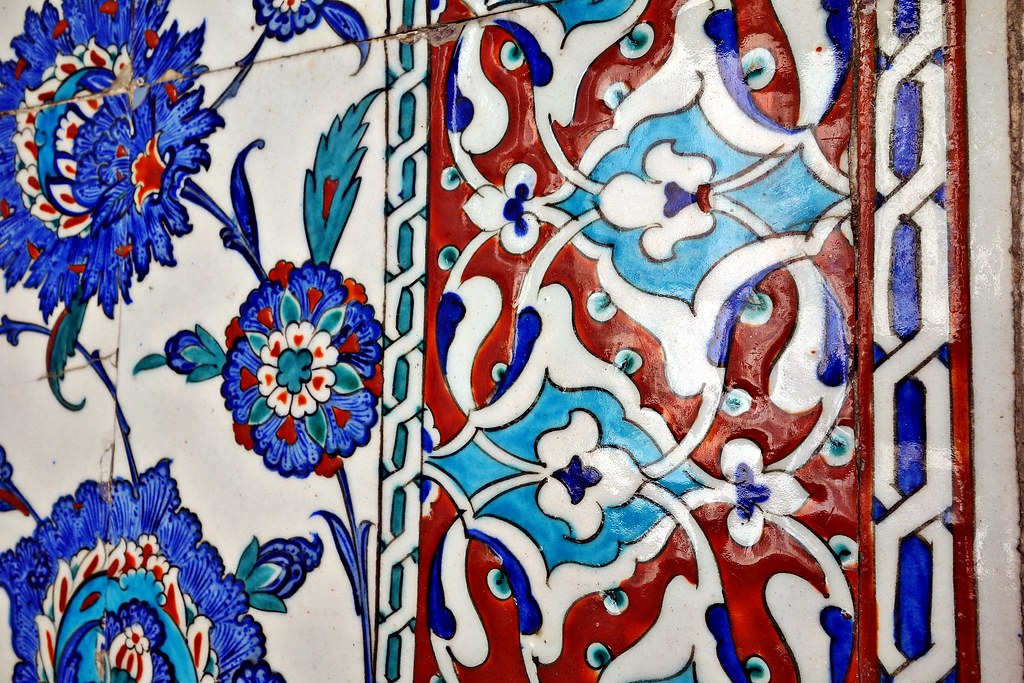 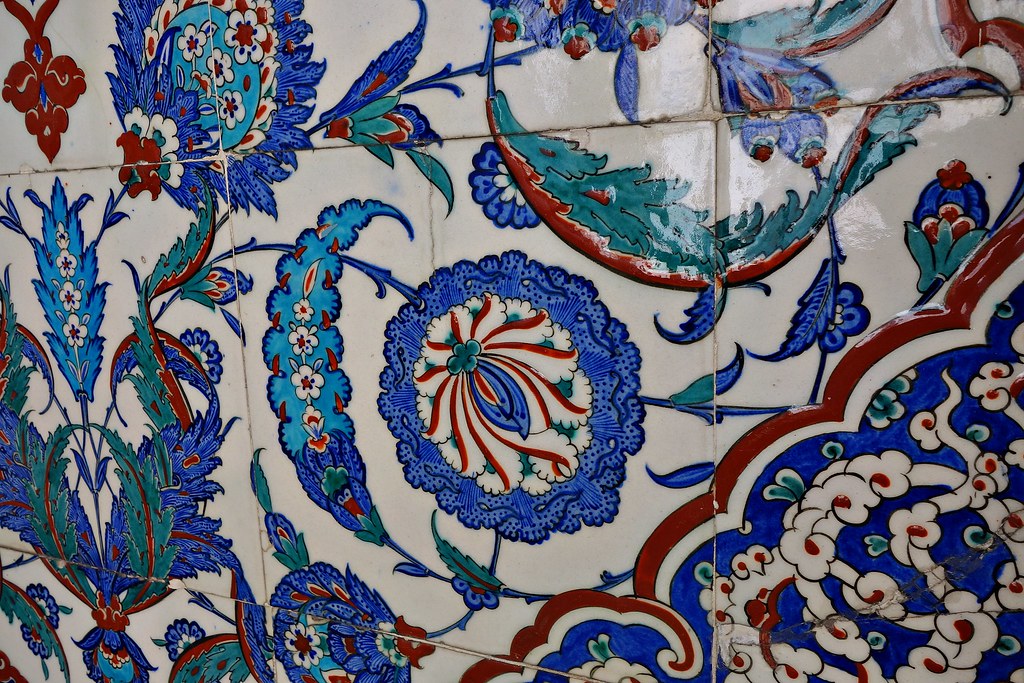 Interior of Murat III's tomb ~ Interior of Murat III's tomb ~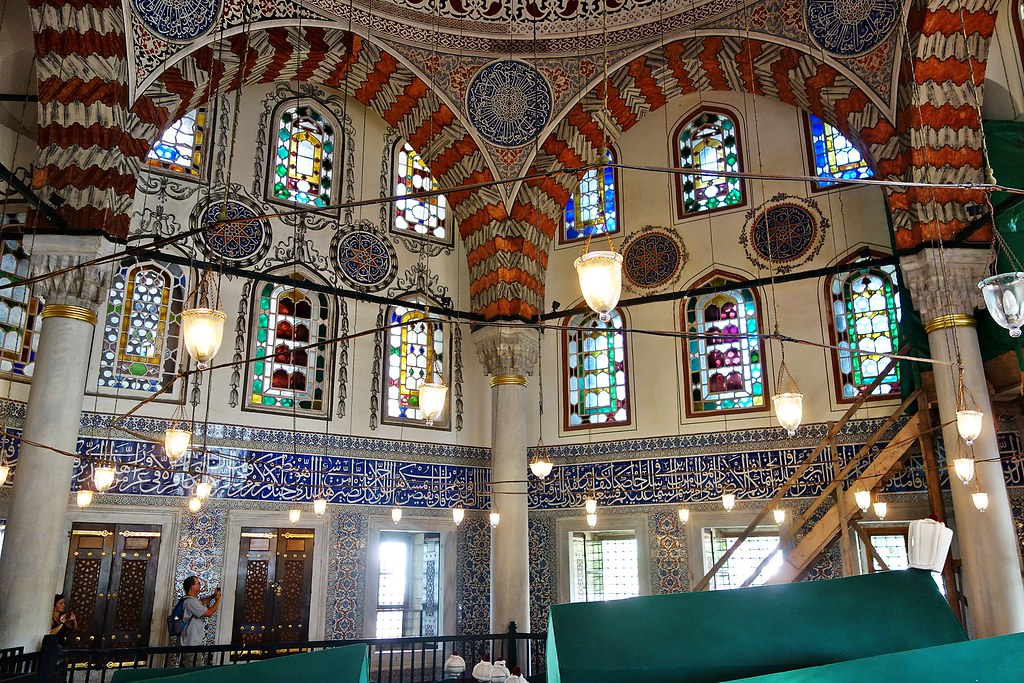 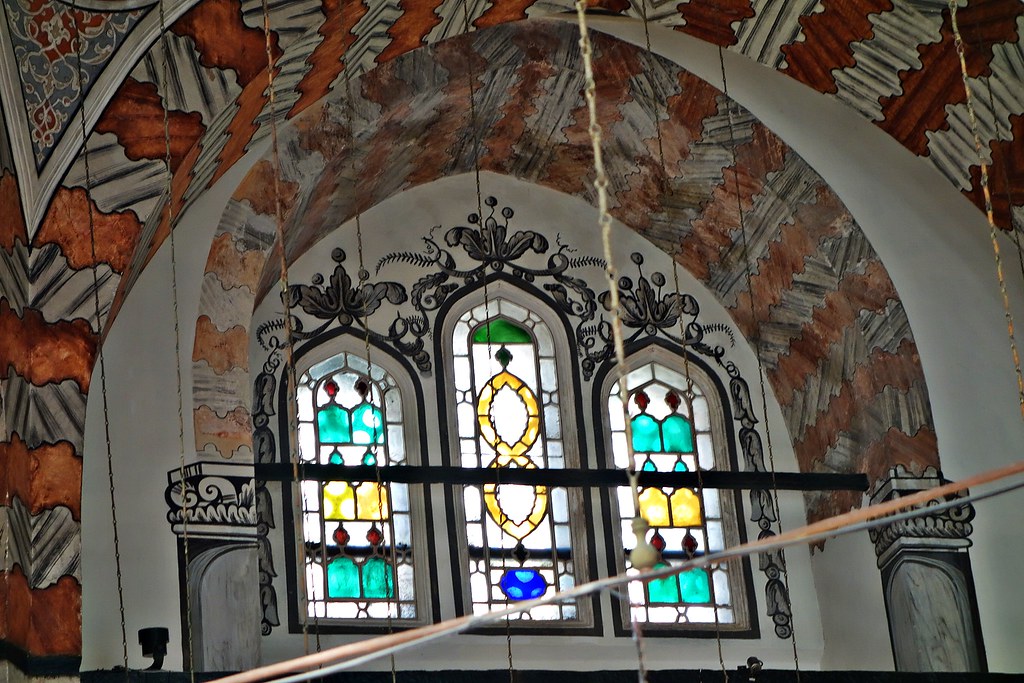 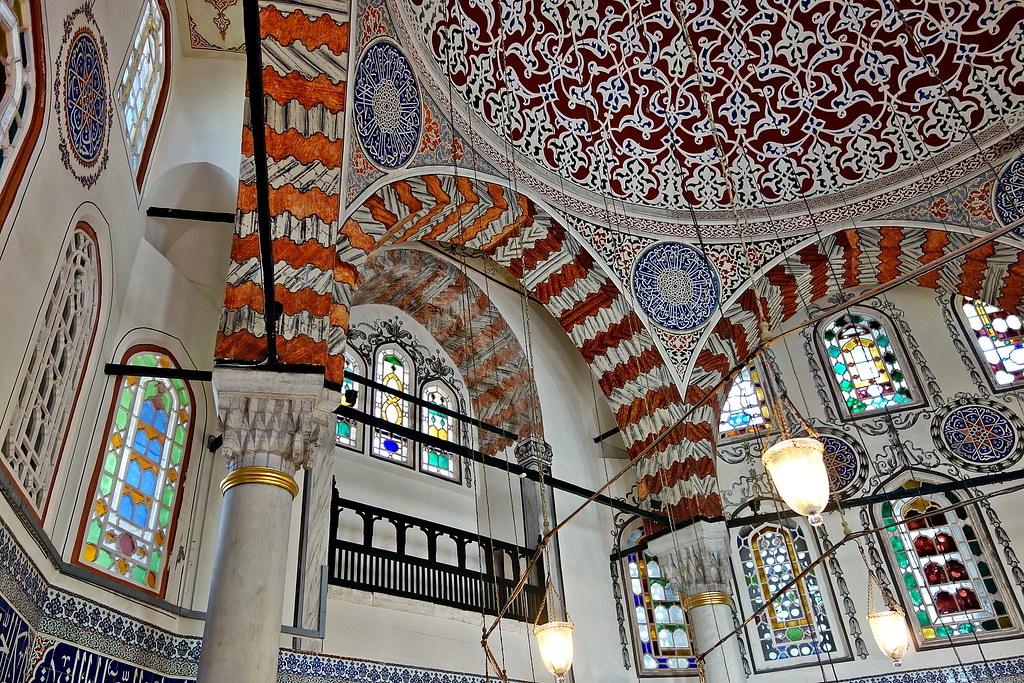 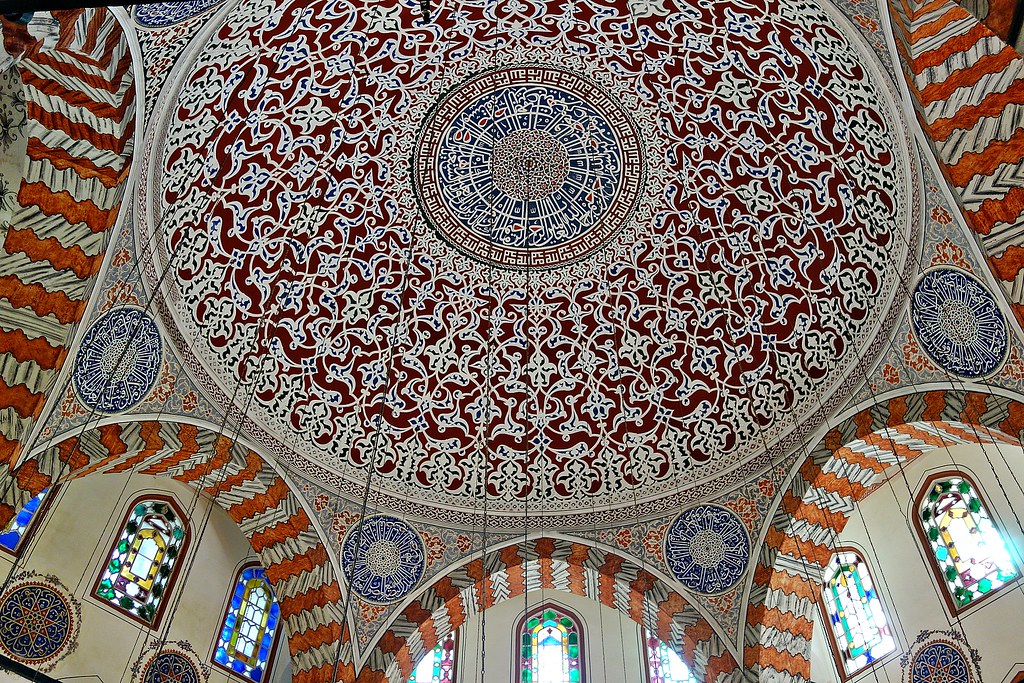 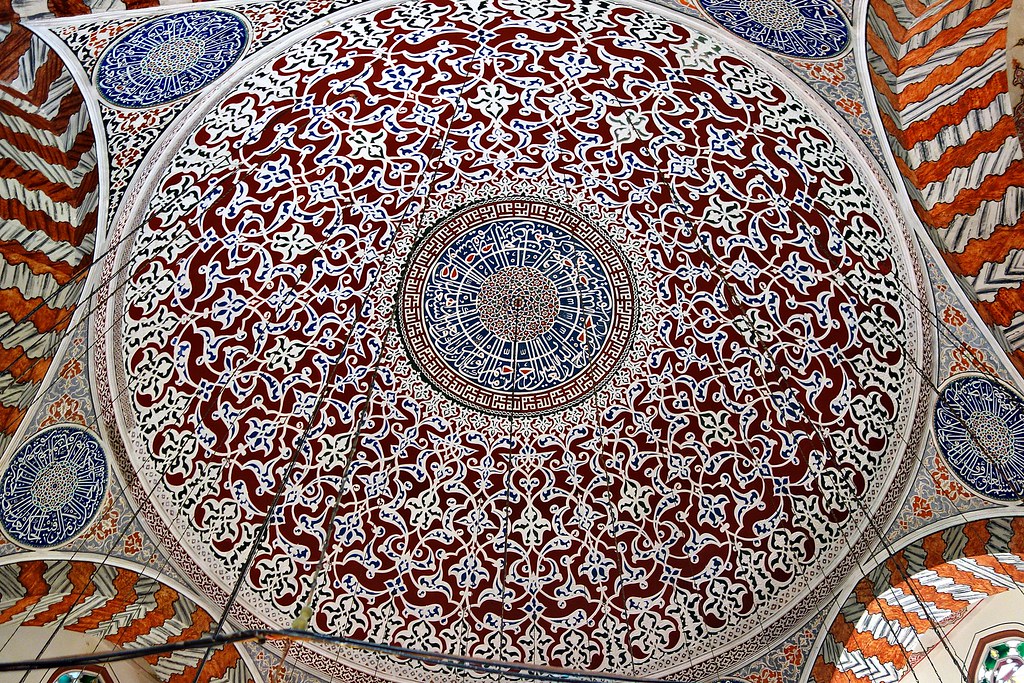 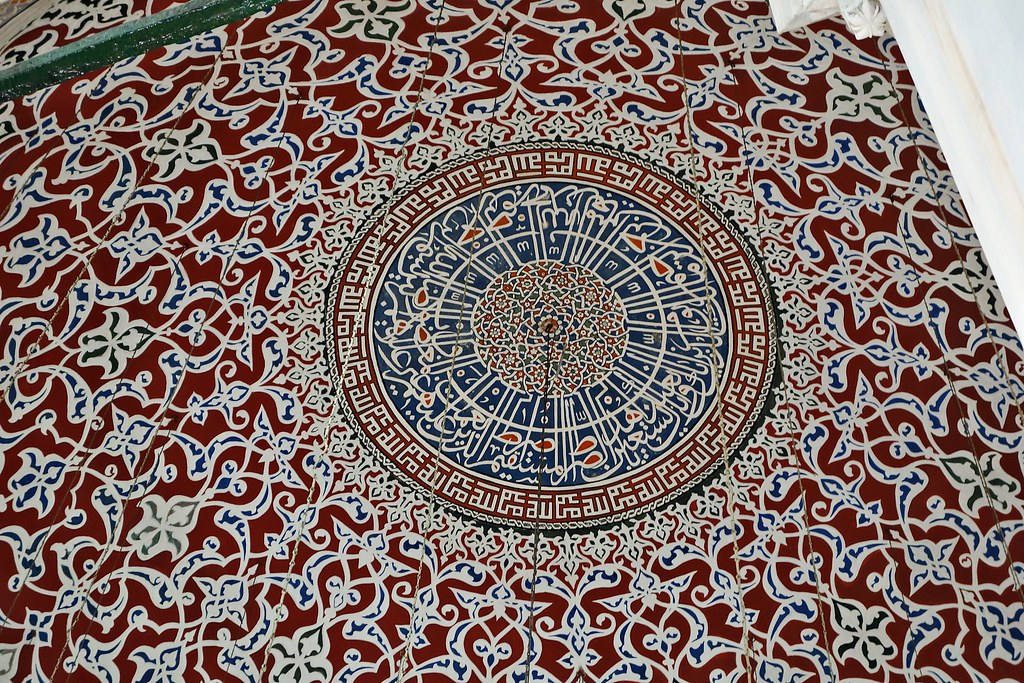
|
|
|
|
Post by bixaorellana on Nov 8, 2015 3:14:51 GMT
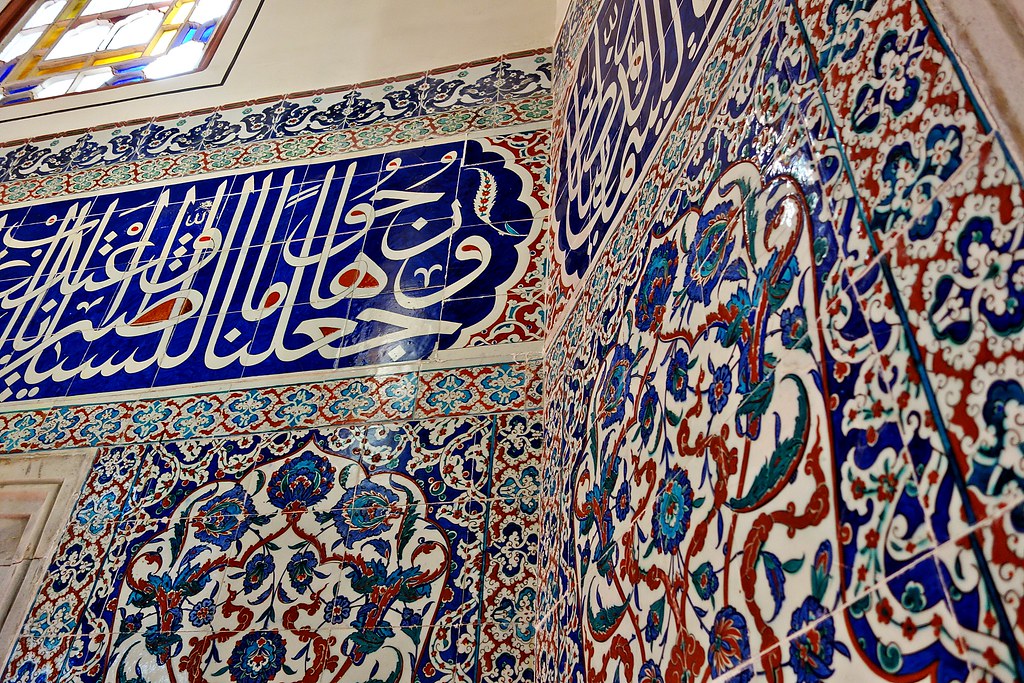 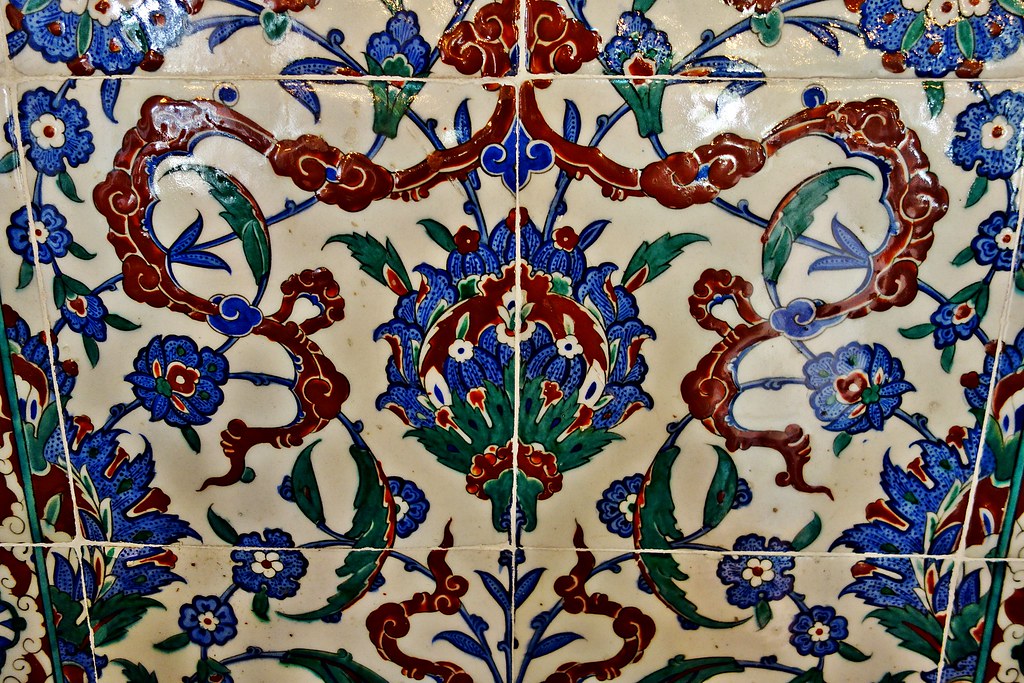 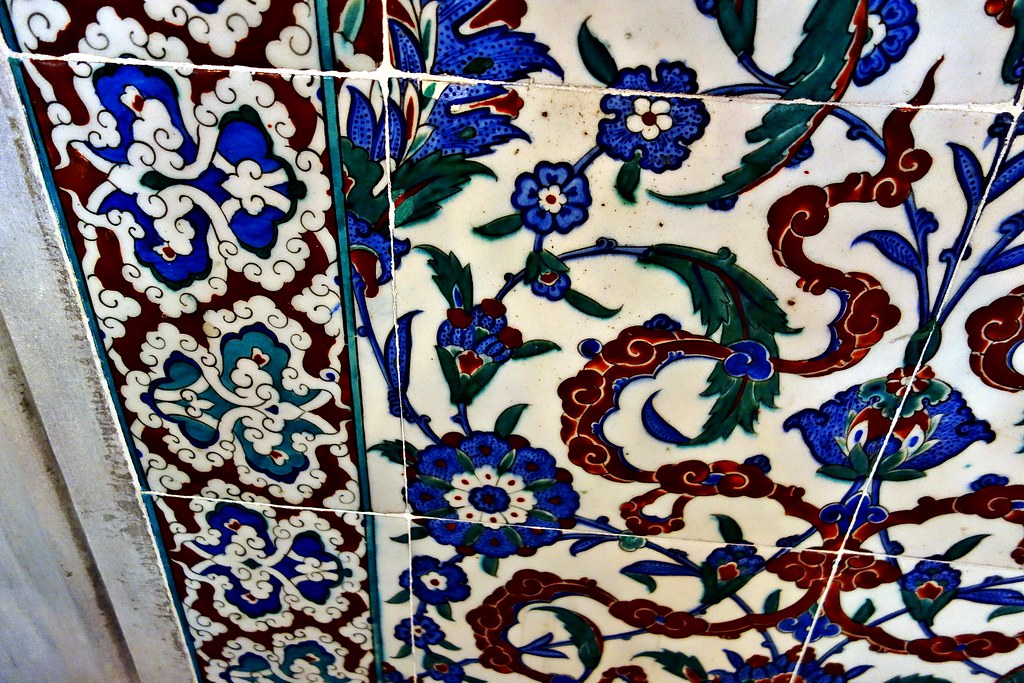 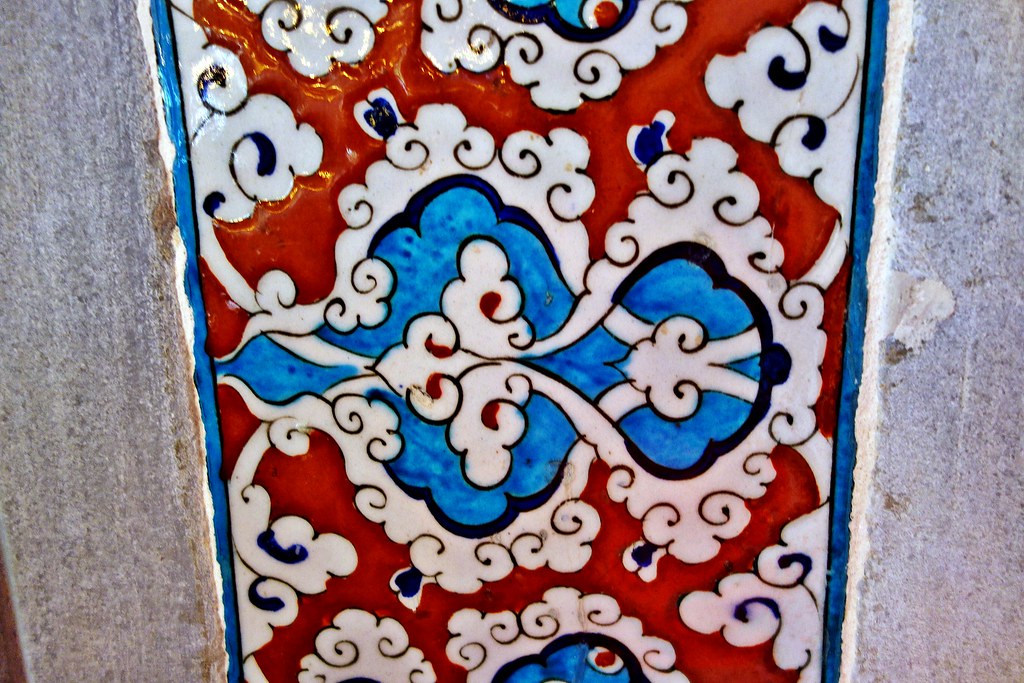 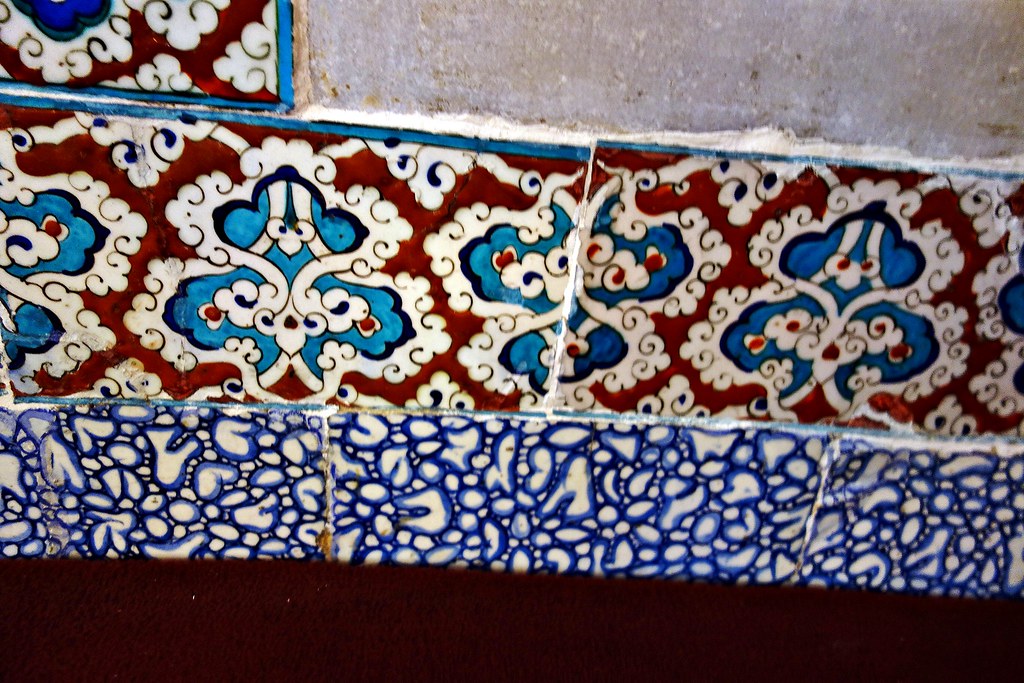 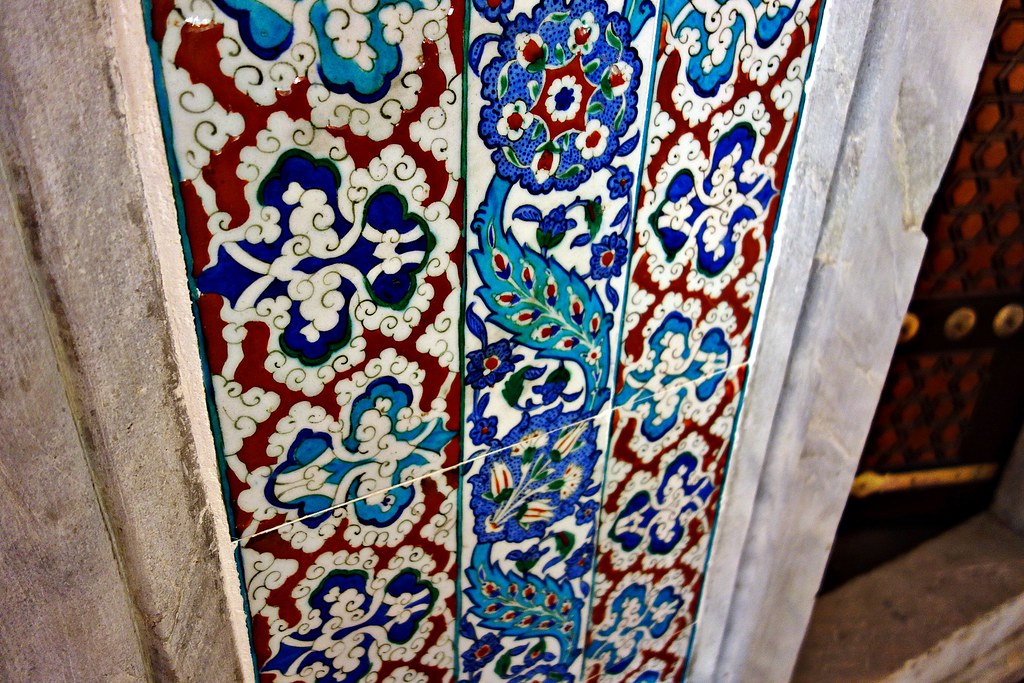 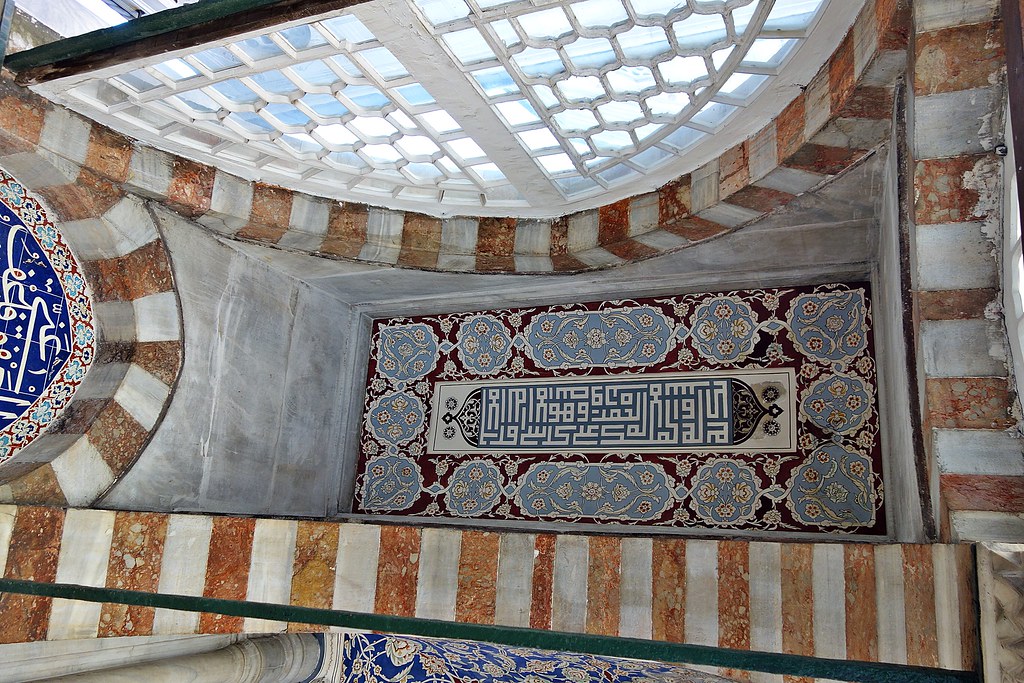 Exiting the way we came in, with a look at the design above the door ~ Exiting the way we came in, with a look at the design above the door ~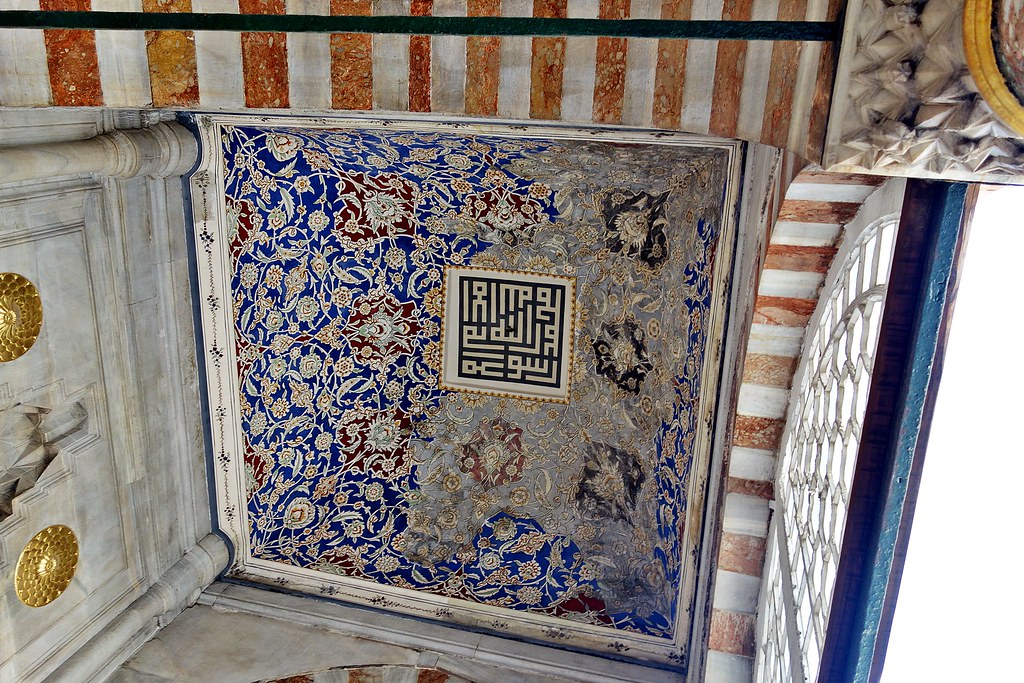 A very quick peek into the Princes' tomb ~ A very quick peek into the Princes' tomb ~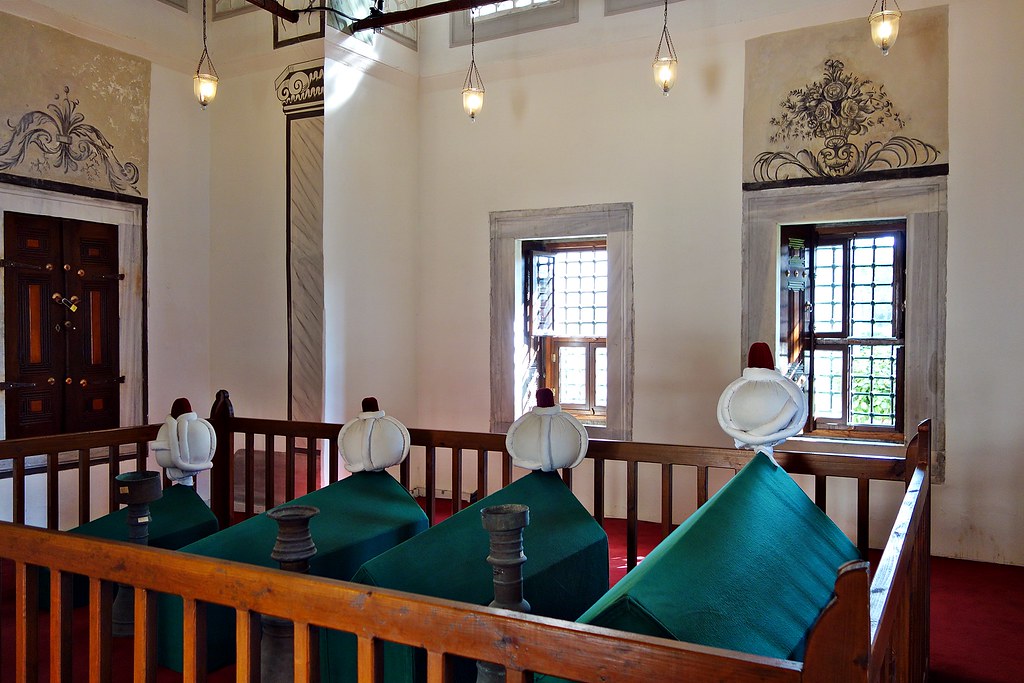 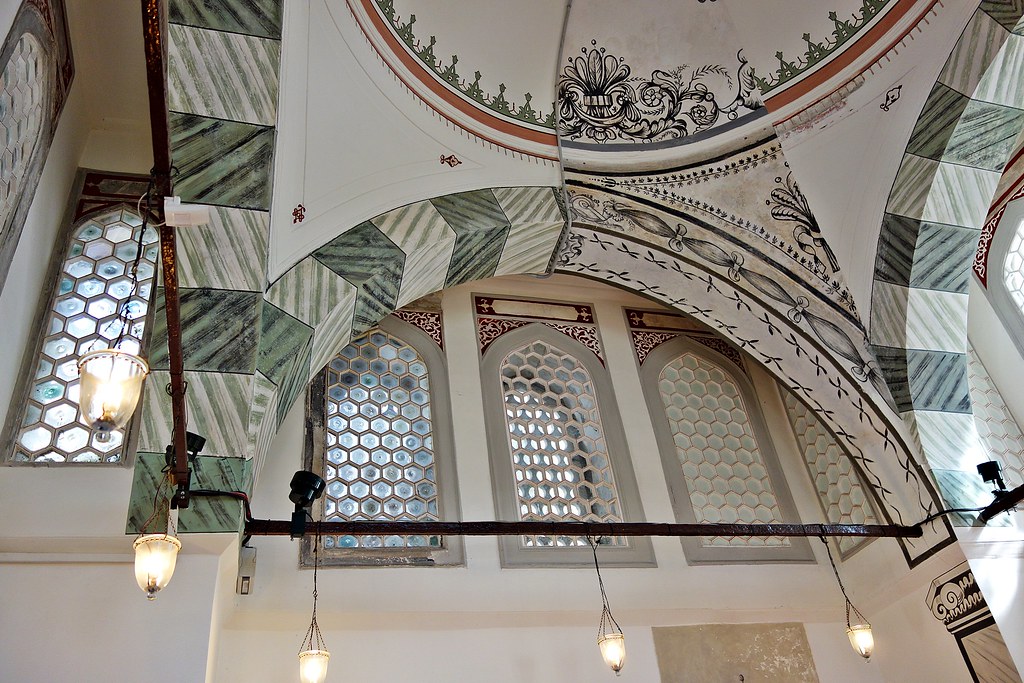 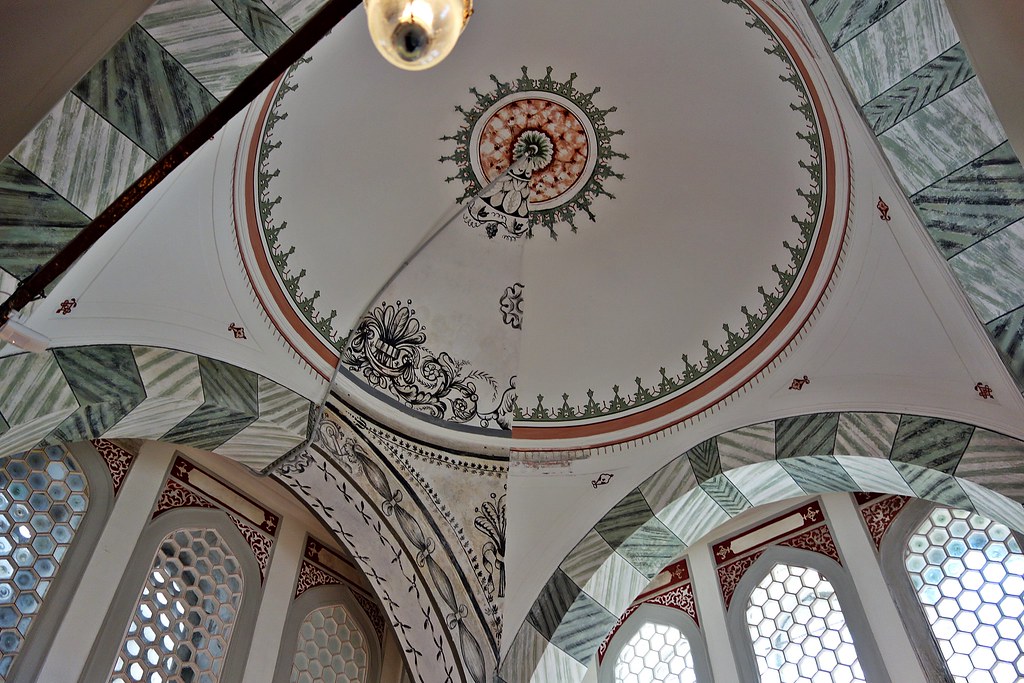 And back out into the land of the living ~ And back out into the land of the living ~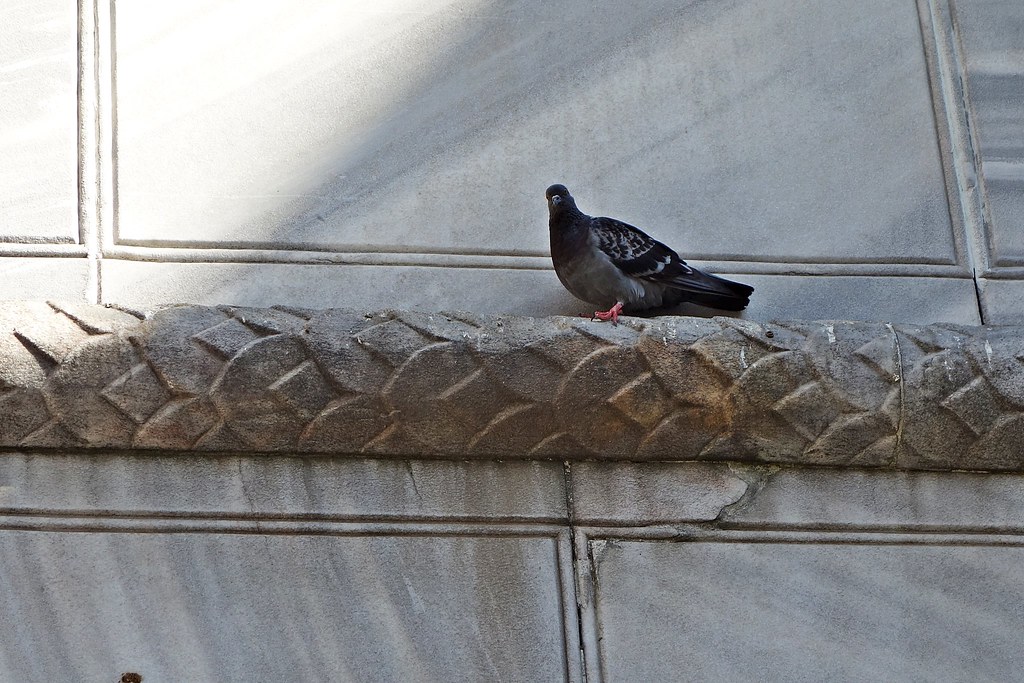 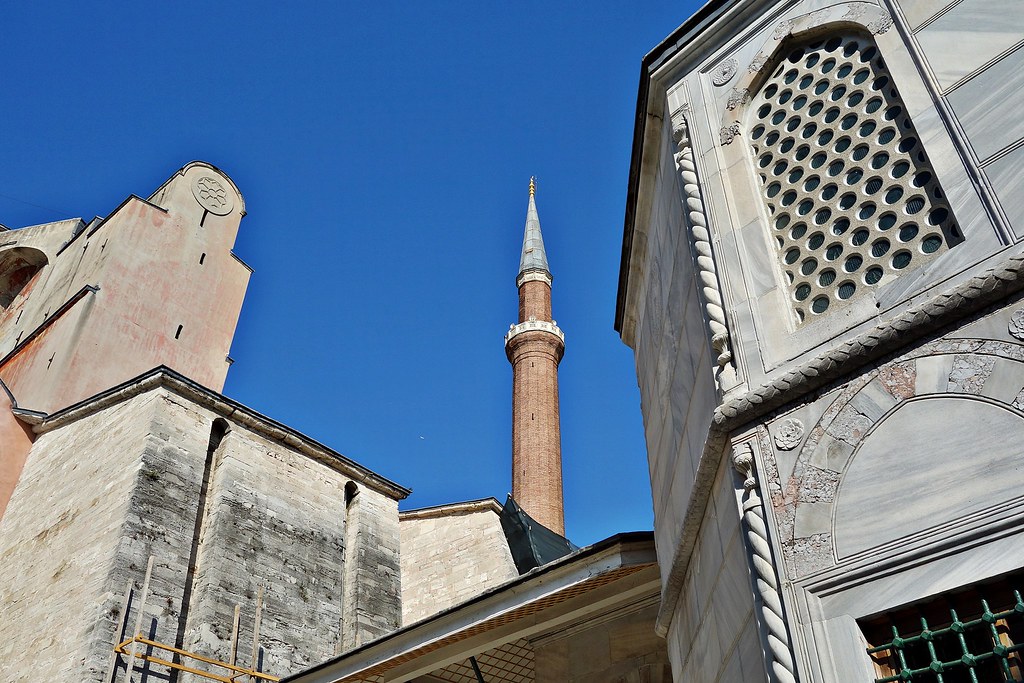 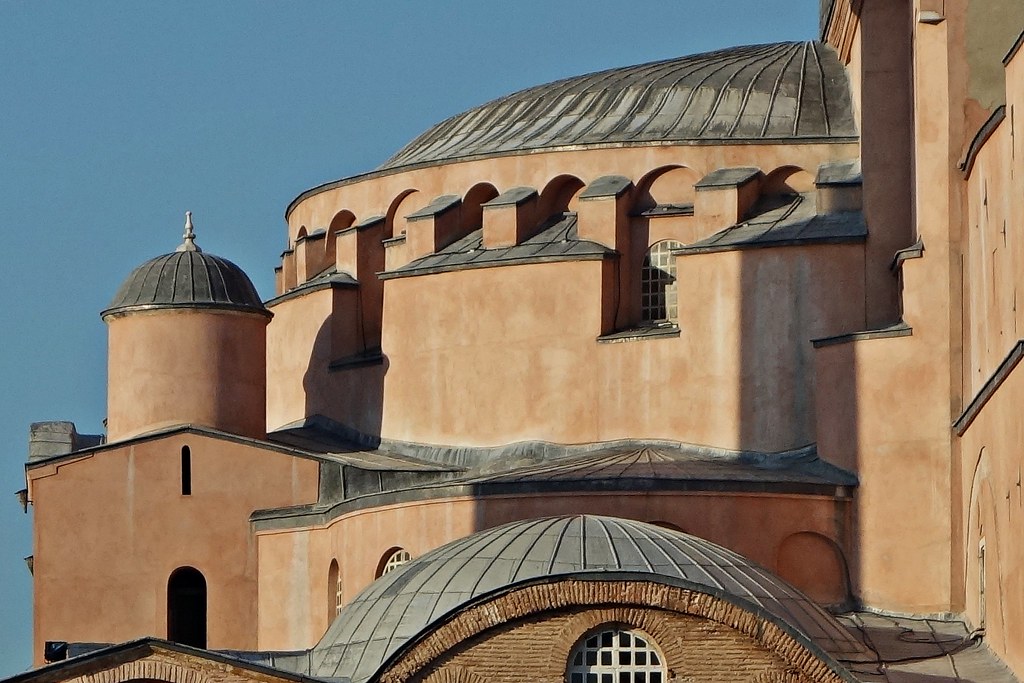 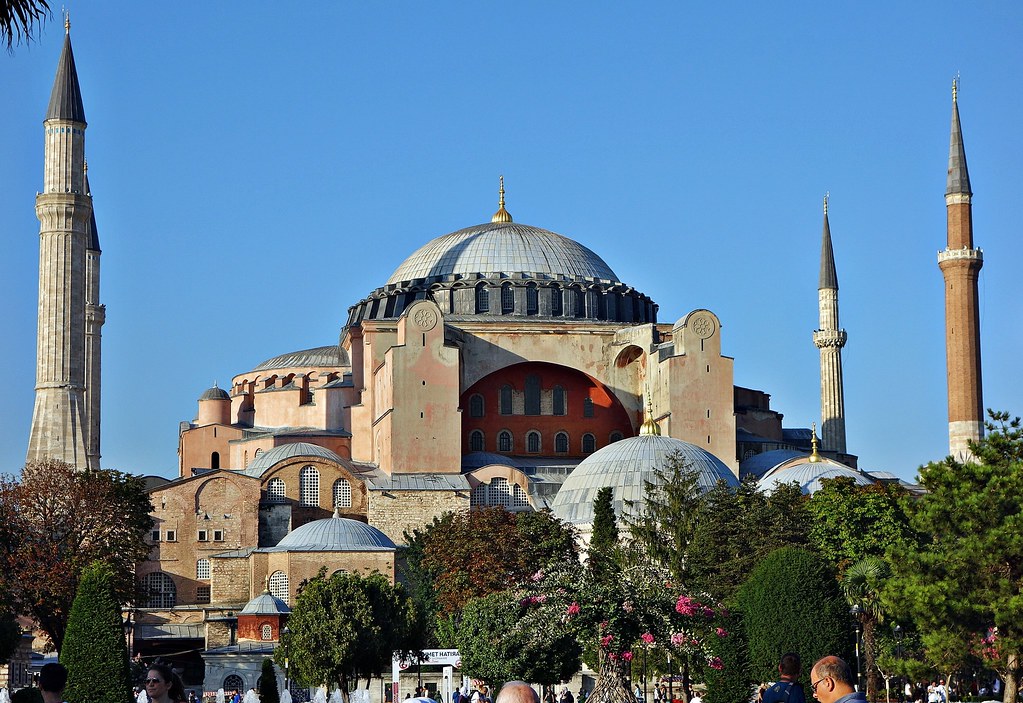 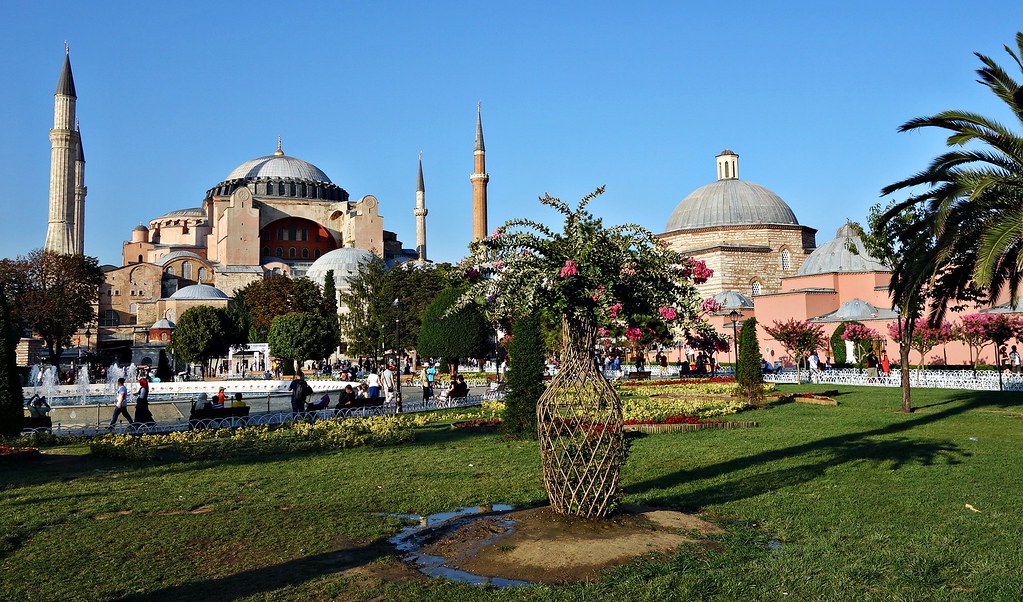  I leave the grounds with a fervent desire to return one day. I leave the grounds with a fervent desire to return one day. |
|
|
|
Post by questa on Nov 8, 2015 4:57:23 GMT
In places like this my thinking often shoots out strange "I wonder if....s"
In this case I wonder if the tiles that got broken ever found their way to the workers homes. I can just see pride of place in a small earthen house given to a shard of great beauty.
|
|
|
|
Post by Deleted on Nov 8, 2015 5:23:45 GMT
And I was wondering if the flower and plant motifs are 'fantasy' plants or if they are supposed to represent existing vegetation.
|
|
|
|
Post by bjd on Nov 8, 2015 7:02:14 GMT
And I was wondering if the flower and plant motifs are 'fantasy' plants or if they are supposed to represent existing vegetation. I would imagine they are stylized versions of real plants and flowers, rather like in oriental carpets. |
|
|
|
Post by bixaorellana on Nov 8, 2015 17:37:43 GMT
Bjd, when I opened the thread this morning I fully expected to find a report from you saying that you'd bought a ticket to Istanbul.  In places like this my thinking often shoots out strange "I wonder if....s" In this case I wonder if the tiles that got broken ever found their way to the workers homes. I can just see pride of place in a small earthen house given to a shard of great beauty. It's lovely to think that, as they could not have been immune to the beauty they were creating. Realistically, I imagine they had this stuff all over the place, although probably not the high-quality panels made for mosques and palaces. But I would bet anything that they ate and drank from pottery they produced. You've probably visited more than one town that produces ceramics. Judging by what I've seen in Mexico, those towns have tons of the stuff in daily use. In a thread I made featuring Atzompa, one of the questions asked was if the stuff was made only for tourists. The answer is no, that it's in use everywhere, even in tiny streetside food stands. To give an idea of its use over time, when visiting any of the pre-Columbian ruins here you can glance down at the road & see all kinds of shards mixed in with the gravel. Earlier in the thread you mentioned the excellent Wikipedia entry on Iznik pottery. It's very informative, although of course the photos illustrate the "better" examples of the stuff. But it's not hard to imagine this piece on the everyday family table, is it?  source sourceI think the picture and text in the first example here bear out that theory. If they were cranking out the stuff for mass consumption, they were surely selling it around town and keeping plenty for themselves. And, as you say, there must have been some pieces, either chipped or "seconds" that didn't make it into palaces but into the artisans' homes. And I was wondering if the flower and plant motifs are 'fantasy' plants or if they are supposed to represent existing vegetation. Bjd has it right, that they are highly stylized versions of things found in nature. Vendors of tiles were quick to point out representations of carnations or tulips on their wares, probably because those are the only examples that are easily identifiable. If you look at the 4th picture from the bottom in Reply #33, you'll see that those are indeed carnations and tulips. And from reading this article, I now know that the vertical panel in that picture shows clouds. Some more information on the motifs here. |
|
|
|
Post by questa on Nov 8, 2015 21:13:20 GMT
I entered Anyport with a few pictures of Central Asian tiles about which I knew nothing. Now with all the pieces of research and knowledge from you all, and the snippets I have had to look up to answer questions, I am amazed at how much more I know and appreciate about the ceramics of this era.
Thank you to all my teachers.
|
|
|
|
Post by bixaorellana on Nov 9, 2015 23:27:12 GMT
Questa, thank YOU for your very kind and intelligent attention to this thread. Really -- you are what kept me going with it!
I have many more mosque pictures which I want to combine into one thread. When I do, I want to revisit the intriguing question of the Kaaba tile set with the jarring out-of-place piece. I have a couple of other examples of Kaaba tiles and will be most interested to get some input on them.
|
|
|
|
Post by bixaorellana on Aug 2, 2020 3:23:40 GMT
By now, everyone knows of Erdogan's arrogant decision to turn Hagia Sophia from a monumental museum of art and history into a mosque. This is an overturning of a brilliant act of secularization by Ataturk 85 years ago. It was part of his constructing a modern Turkey and also gave the world a museum like no other. edition.cnn.com/2020/07/10/europe/hagia-sophia-mosque-turkey-intl/index.htmlAlthough Hagia Sophia can still be visited, it won't be the same experience, what with the Christian-themed mosaics covered, a tragedy when you consider the painstaking amount of research and work that has gone into uncovering the layers of history in the building. But a particular aspect of this great place has been captured, through the modern scientific magic of acoustic archaeology: Bissera Pentcheva, an art historian at Stanford University ... has spent the past decade studying the building’s extravagantly reverberant acoustics to reconstruct the sonic world of Byzantine cathedral music.If at all possible, access this NYTimes article for the information and links it provides: www.nytimes.com/2020/07/30/arts/music/hagia-sophia-acoustics-music.html If you can't get past the paywall, there is this: www.npr.org/2020/02/22/808404928/listen-the-sound-of-the-hagia-sophia-more-than-500-years-agoThe music: Lost Voices of Hagia Sophia: |
|
|
|
Post by tod2 on Aug 2, 2020 14:03:44 GMT
Hopefully the tide will turn full circle and when he is dead and buried and a new leader will have a better vision. Not much hope but man has not trodden this earth for more than 16 seconds before midnight if you compare the age of the earth in a 12hr clock. A favourite hero of mine, Carl Sagan, did a wonderful television story of mankinds short time on earth.
Leaders of some nations like to throw their weight around when they know full well nobody can challenge them. Only proves to the rest of us what a small puny little men they are..
|
|
|
|
Post by kerouac2 on Aug 2, 2020 14:24:37 GMT
They'll get rid of Erdogan sooner or later, but frankly using Hagia Sophia one day a week as a mosque does not shock me. And they are only pulling drapes across some of the Christian symbols during that time period and all of the rest of the week everything remains as it was before. Kemal Ataturk was an incredibly progressive person and did wonders for Turkey. However, everything he did was not engraved in stone never to be changed again. Countries evolve over time, and I will certainly not single out Turkey for my own criticism for this relatively minor return to tradition after a hiatus of less than one hundred years.
I wonder how much of an outcry there was when France returned its cathedrals and churches to the clergy in 1801. Of course the internet was not as developed then, so I suppose it went pretty much unnoticed except by the Vatican. I think it was a mistake.
|
|
|
|
Post by bixaorellana on Aug 2, 2020 16:37:33 GMT
"return to tradition" -- Hagia Sophia started out as a Christian church, so to supposedly honor tradition it should be returned to that use, which would be equally pointless as the present return to use as a mosque. This is a political move, plain and simple. It's not as though Istanbul lacks mosques. The Blue Mosque is only an easy walk away from Hagia Sophia, and last year Erdogan cut the ribbon on the Çamlıca Mosque, which holds 63,000 people. It's not about Ataturk's legacy so much as about the architectural, archaeological, and historical insights the building has rendered and continues to render in its museum form. |
|
|
|
Post by kerouac2 on Aug 3, 2020 4:23:41 GMT
And it still serves its purpose as a secular museum 6 days a week.
|
|
|
|
Post by bixaorellana on Aug 3, 2020 5:22:23 GMT
I wonder how much of an outcry there was when France returned its cathedrals and churches to the clergy in 1801. You have to wonder if France did that to be nice to church-goers, or because it prudently decided to let the church pay for the upkeep on those buildings. Museum fees help to fund upkeep and research. All mosques are used for prayer throughout the day every day, not just one day a week. |
|
|
|
Post by kerouac2 on Aug 3, 2020 5:55:55 GMT
Well, no I don't wonder at all. The government is responsible for the total upkeep all of religious building built before 1905. And they took over that task when they saw how the Catholic church was letting its buildings fall totally into ruin -- notably Notre Dame de Paris -- while the clergy filled their pockets, drank fine wine and paid for the best whores. One of the reasons that Victor Hugo wrote his novel about Notre Dame was to bring attention to what was going on. All mosques are used for prayer throughout the day every day, not just one day a week. Hagia Sophia is supposed to be just one day a week. Time will tell. |
|